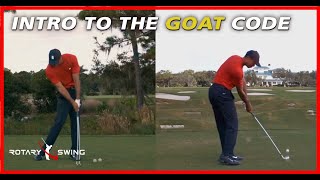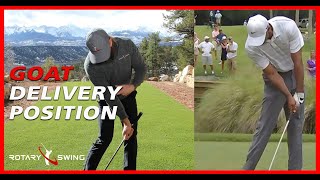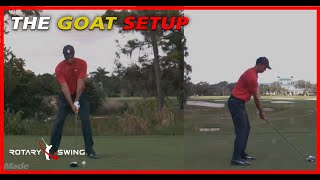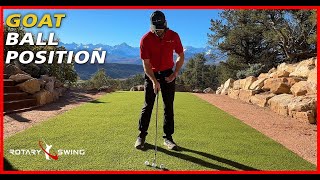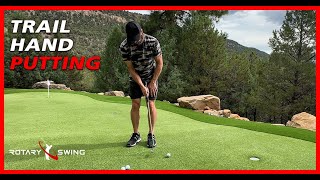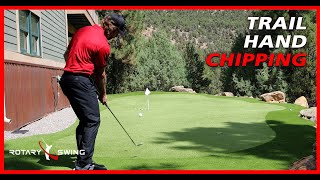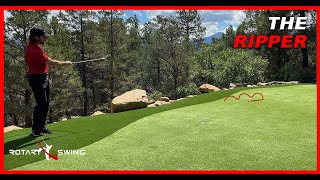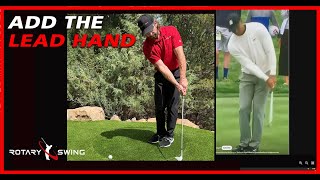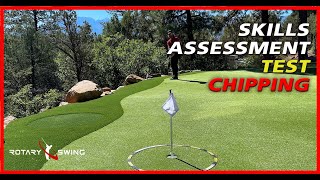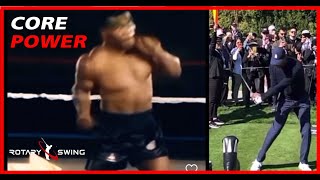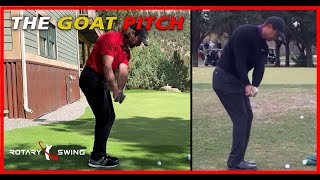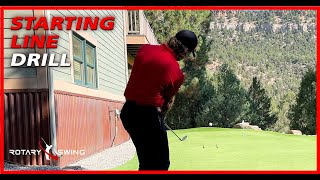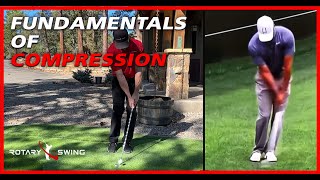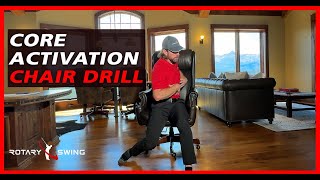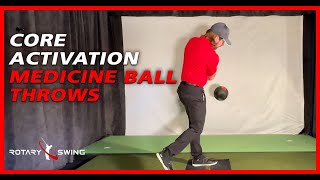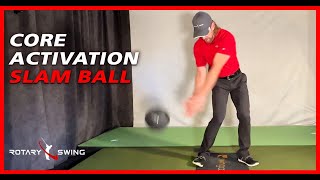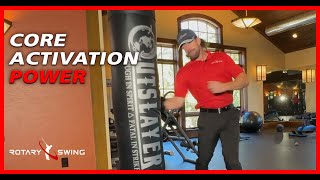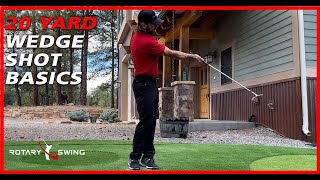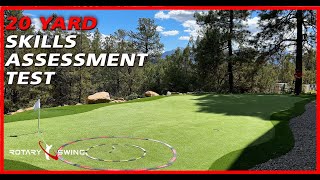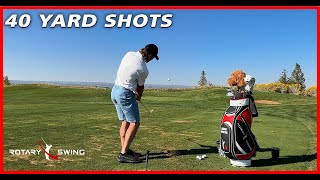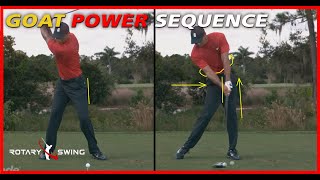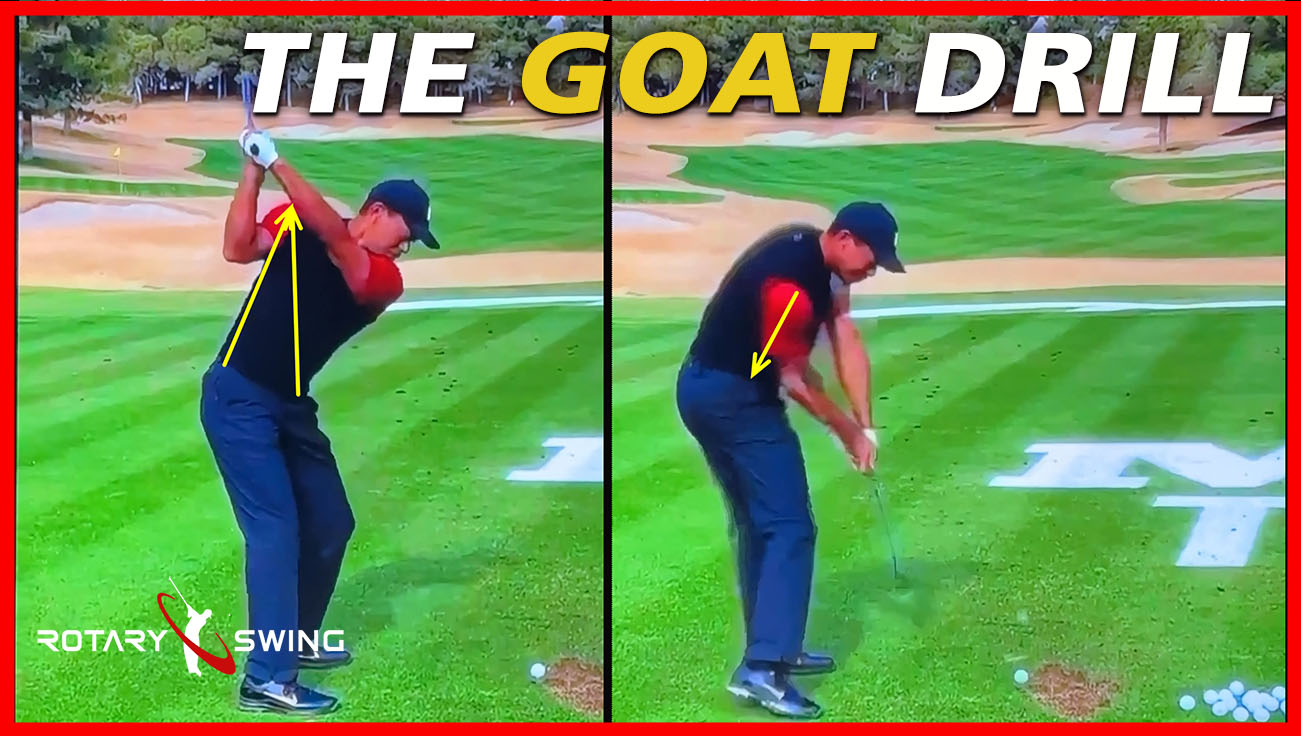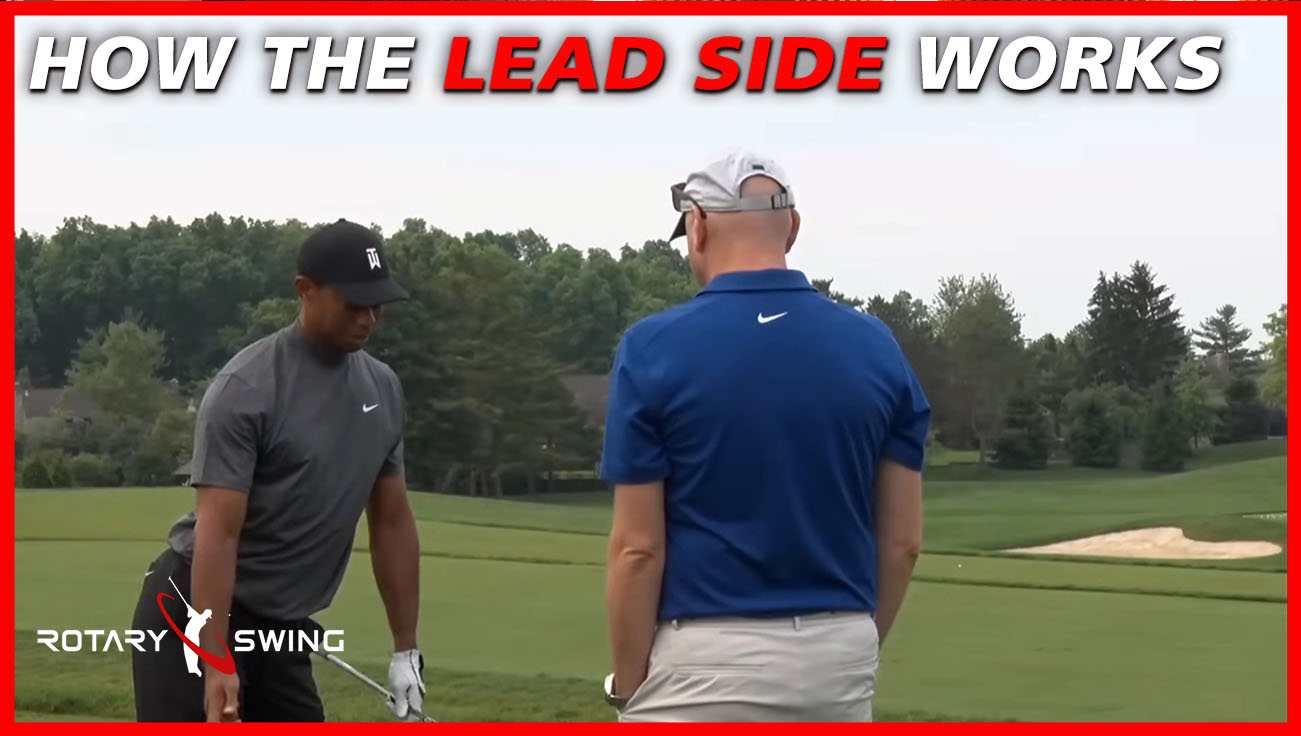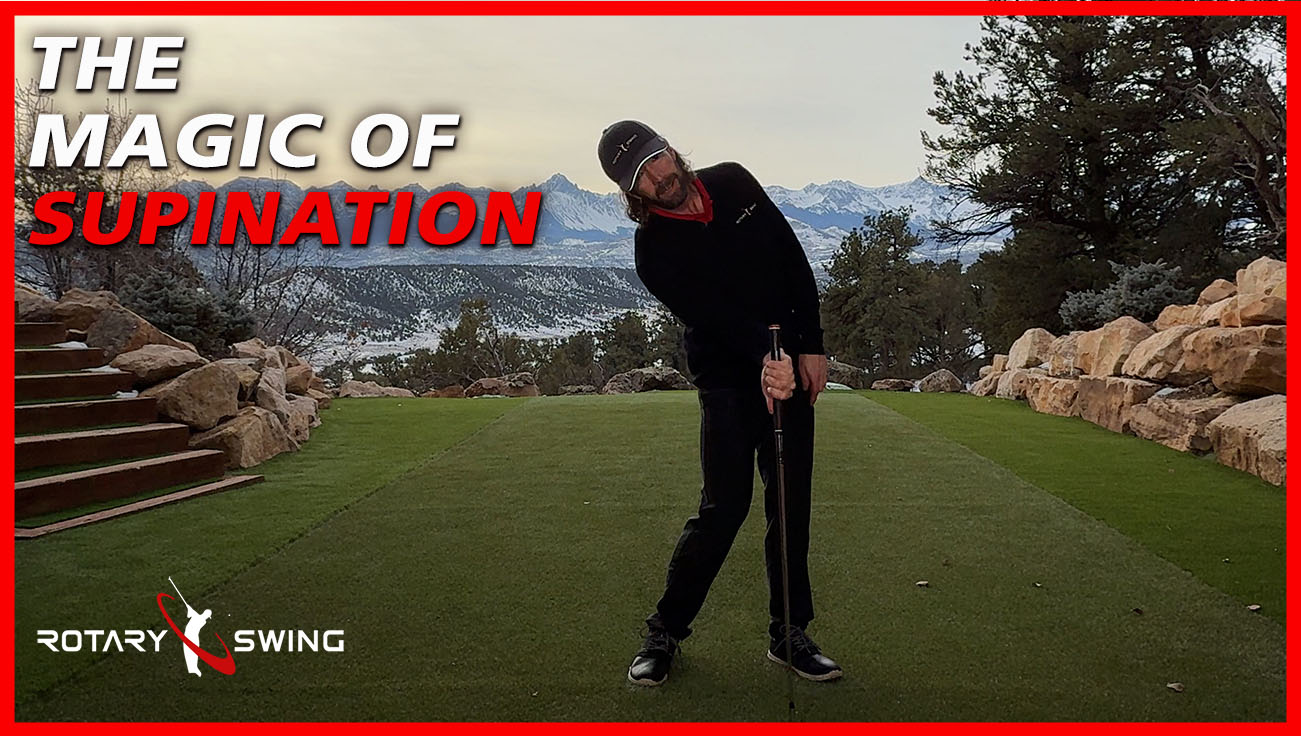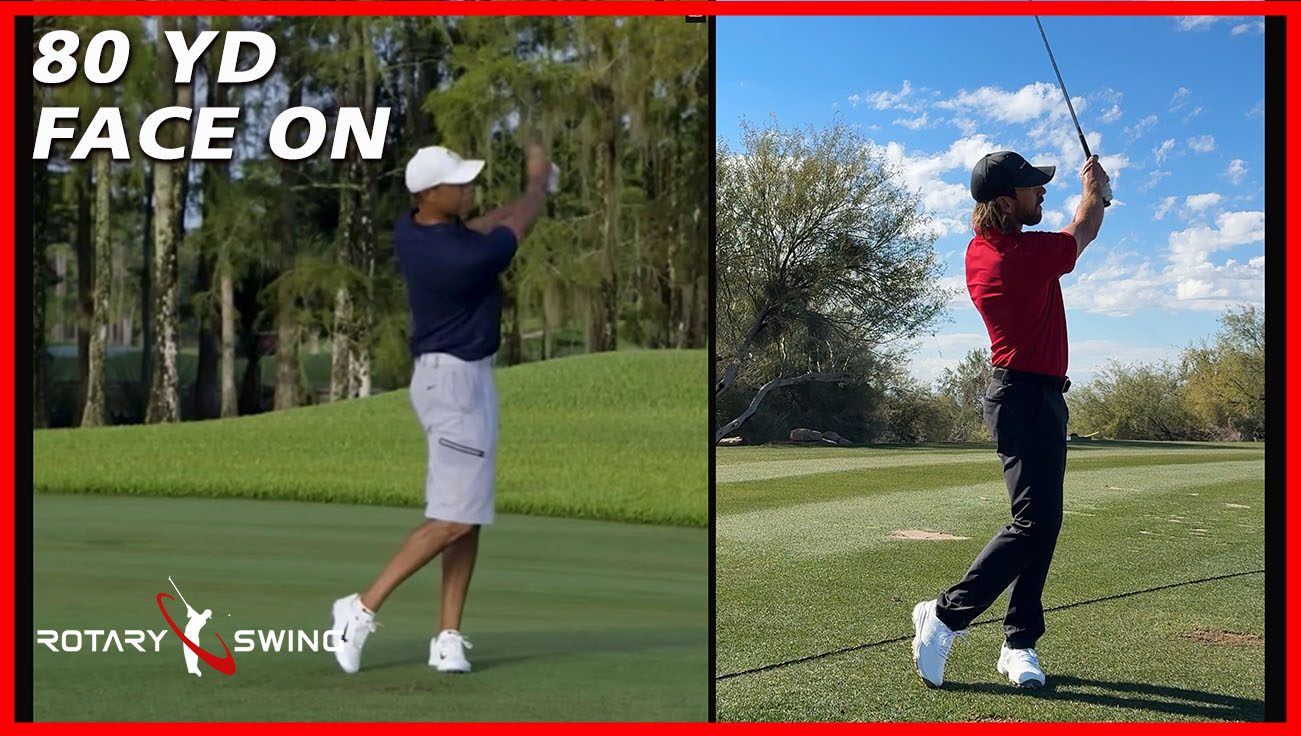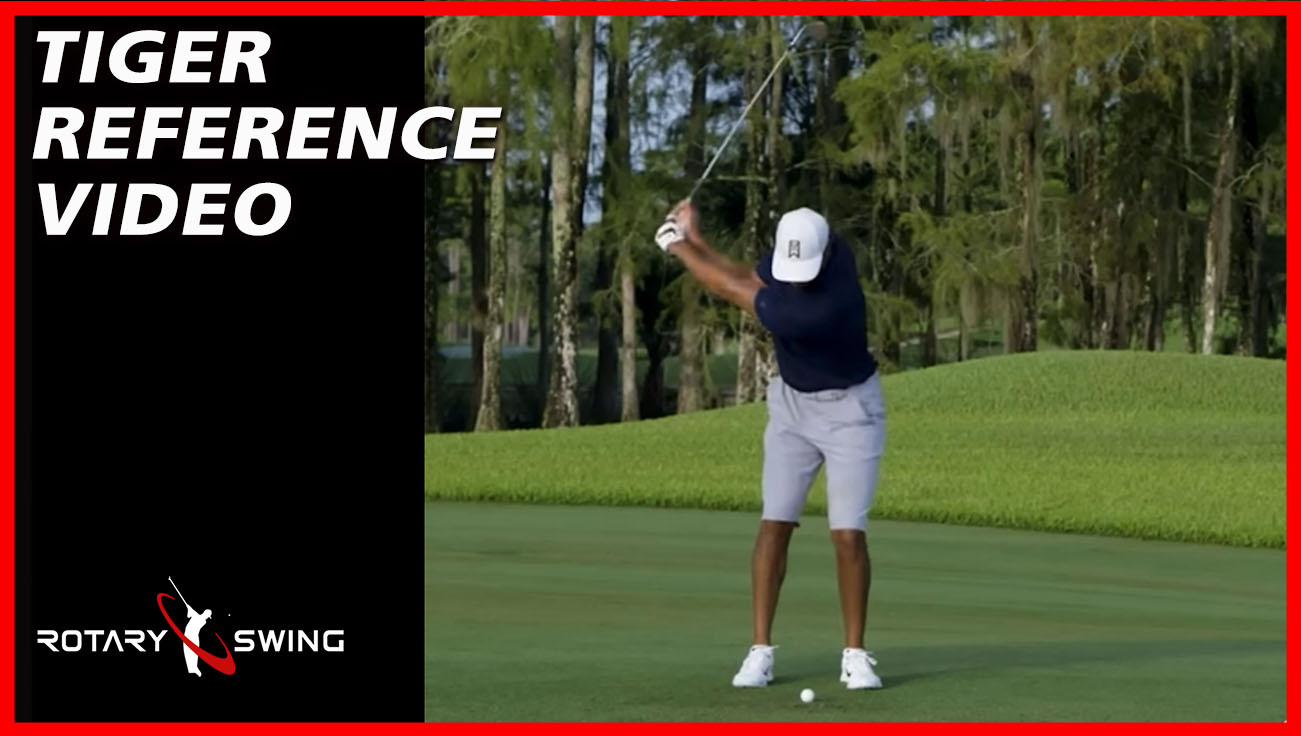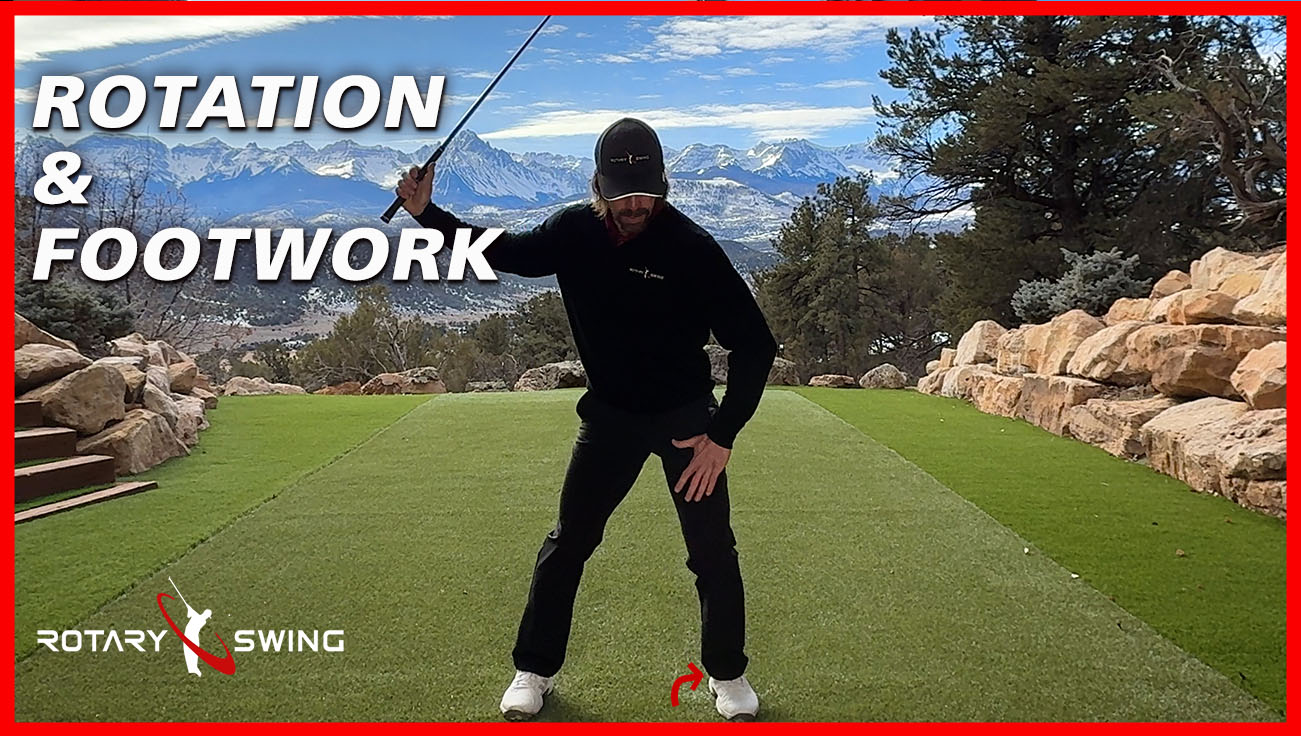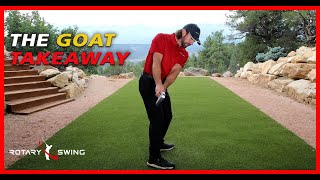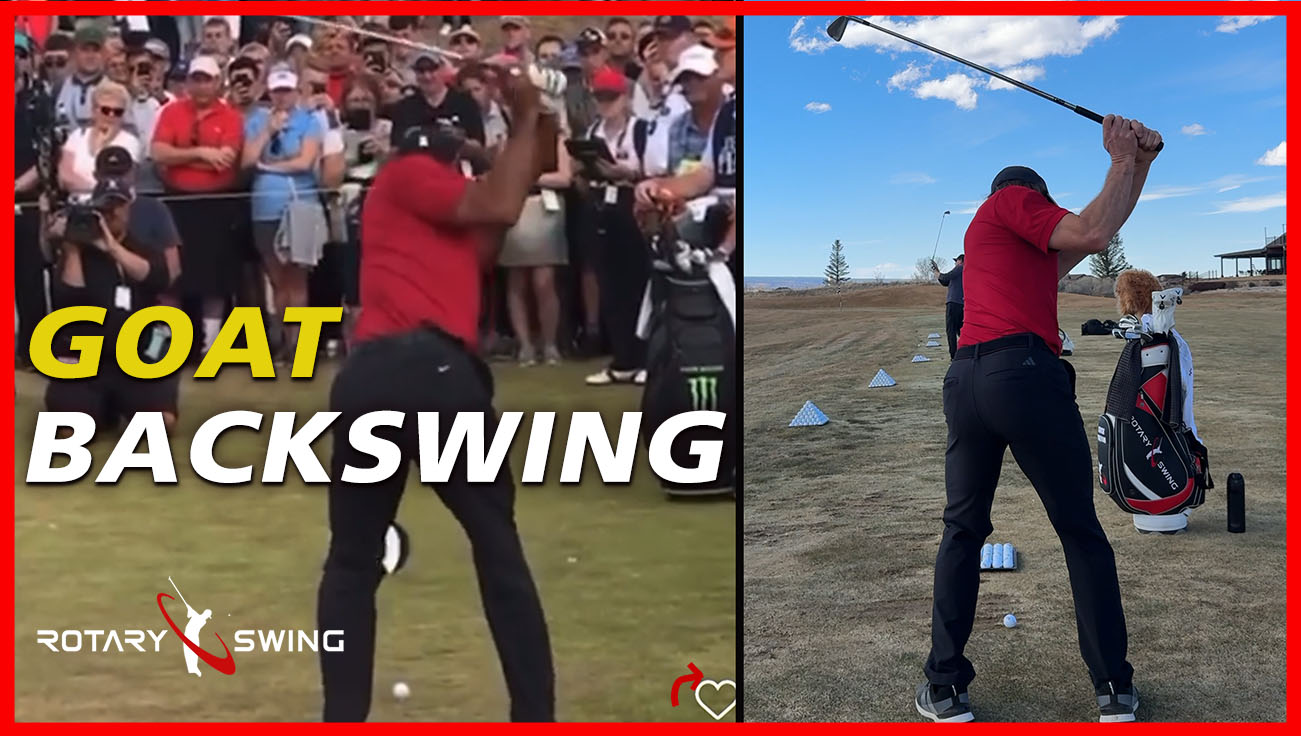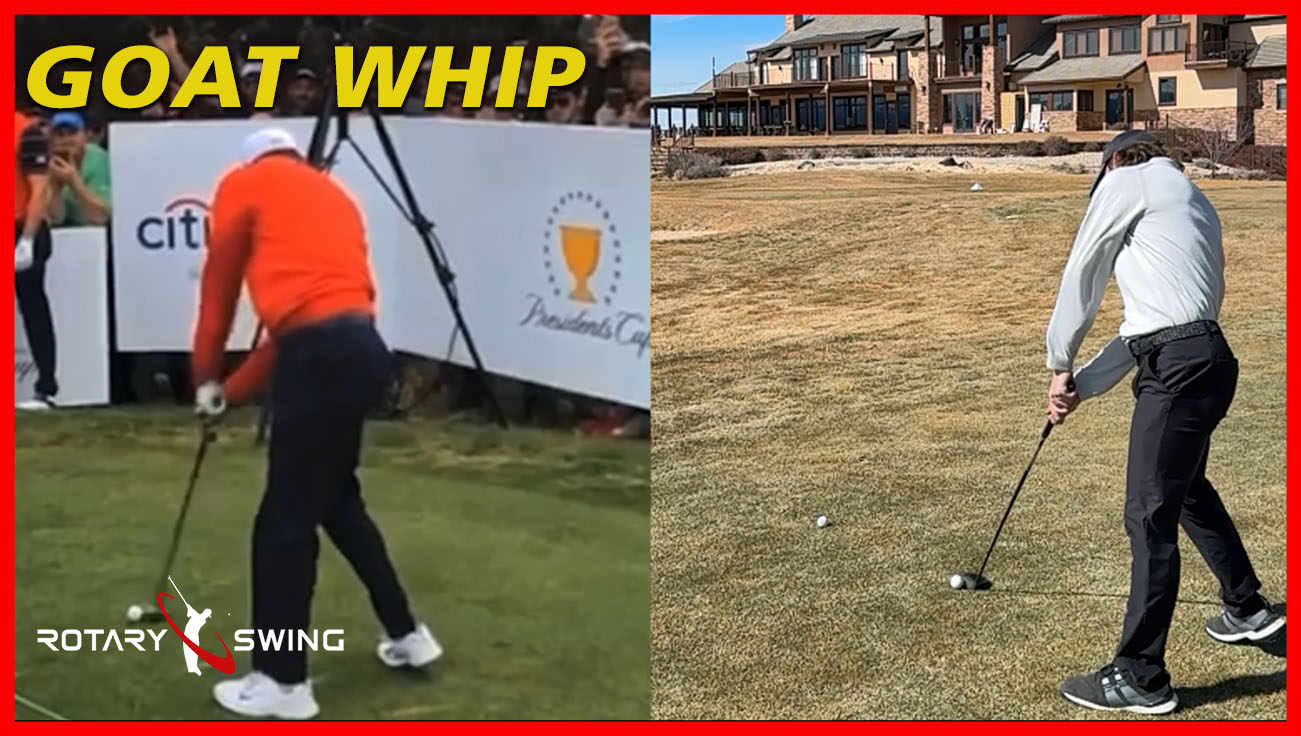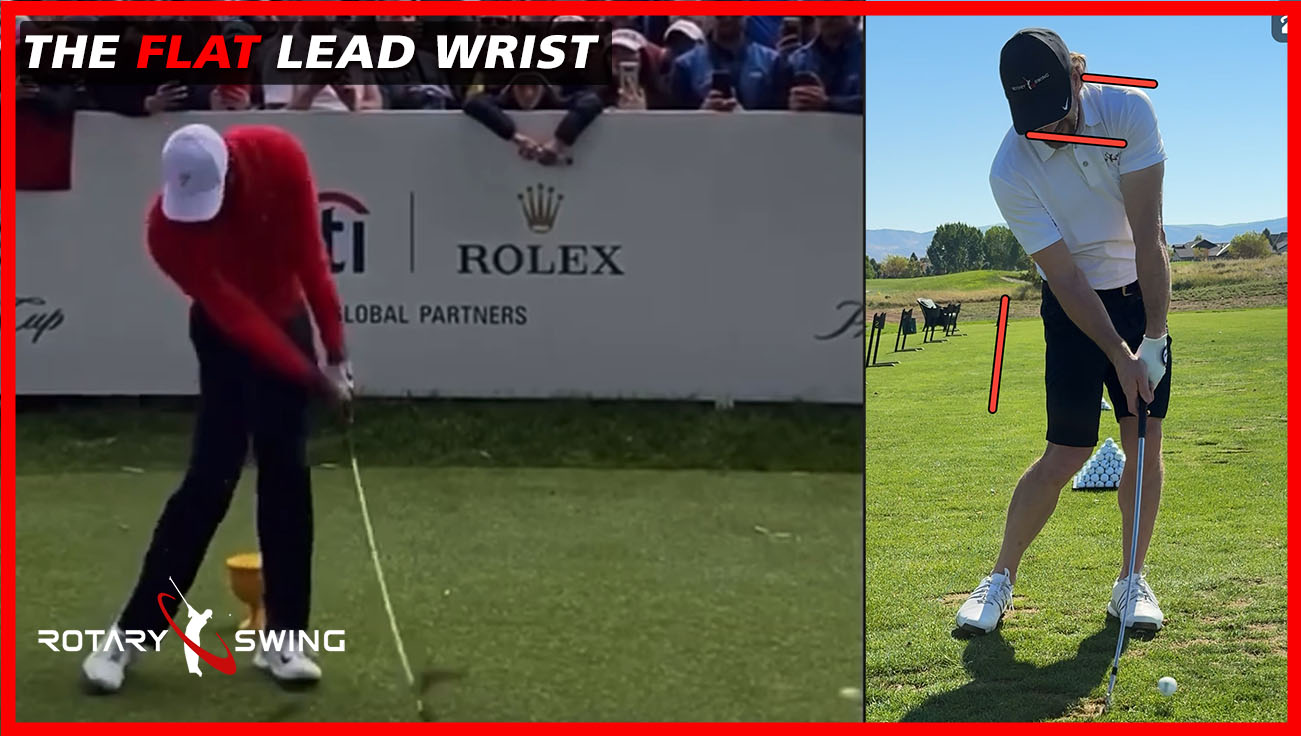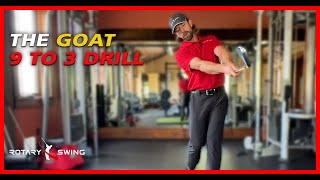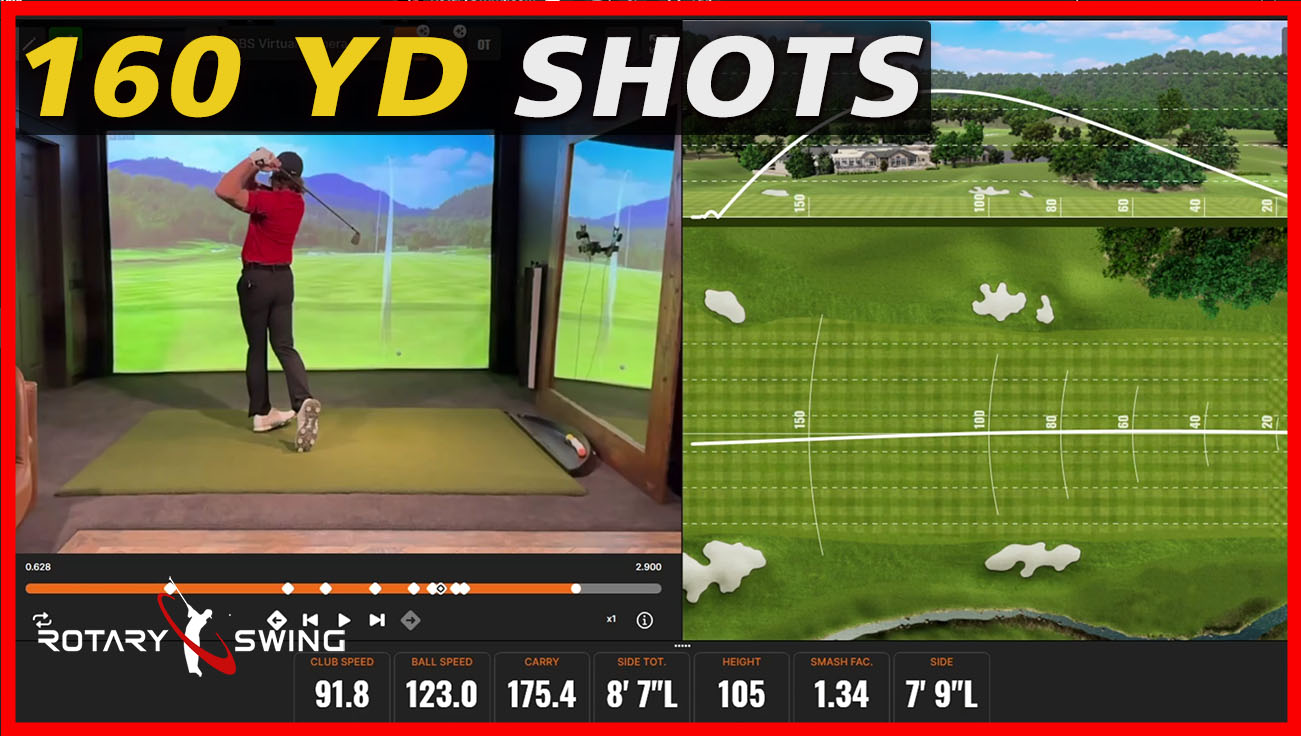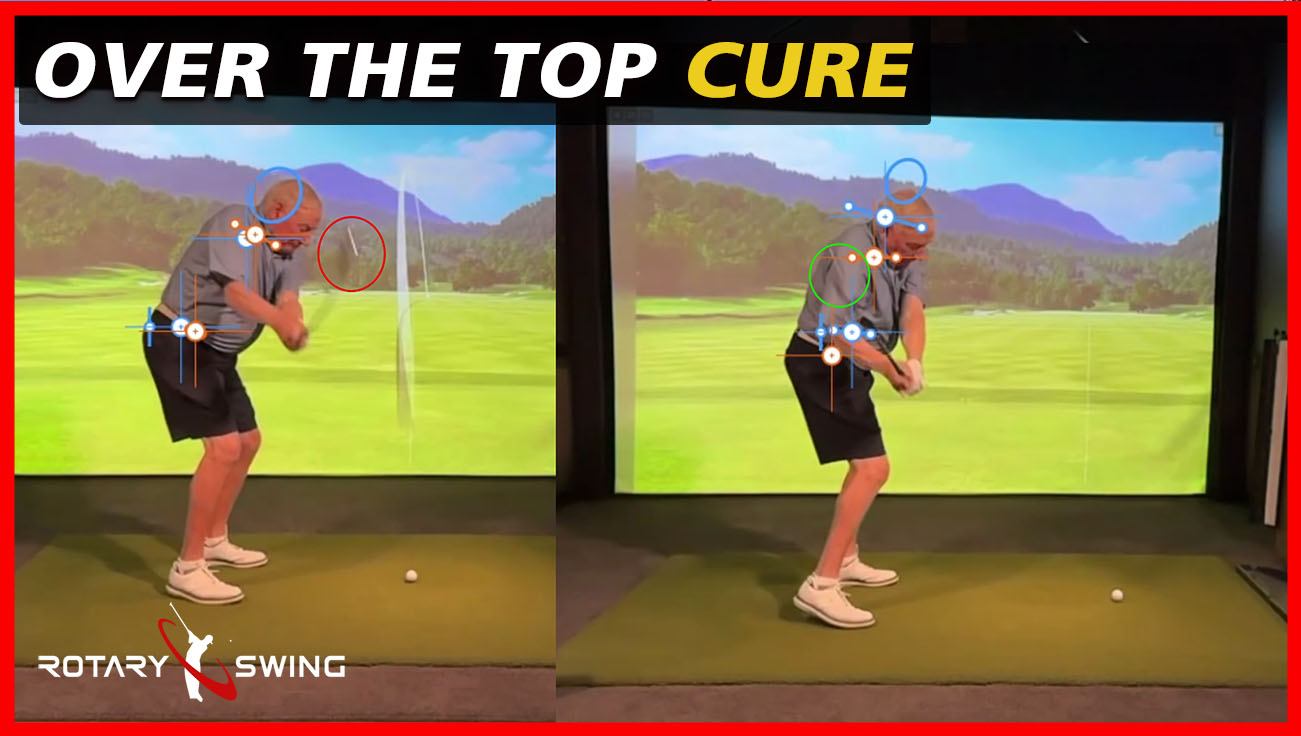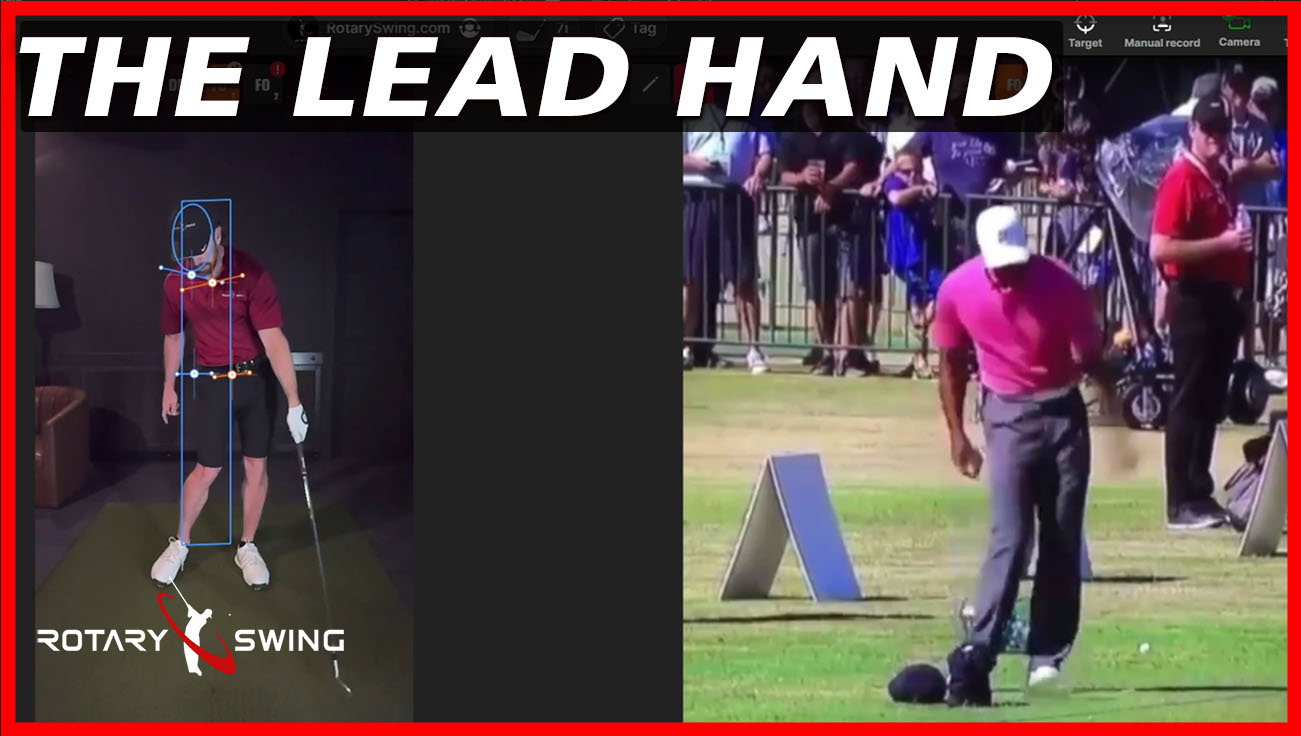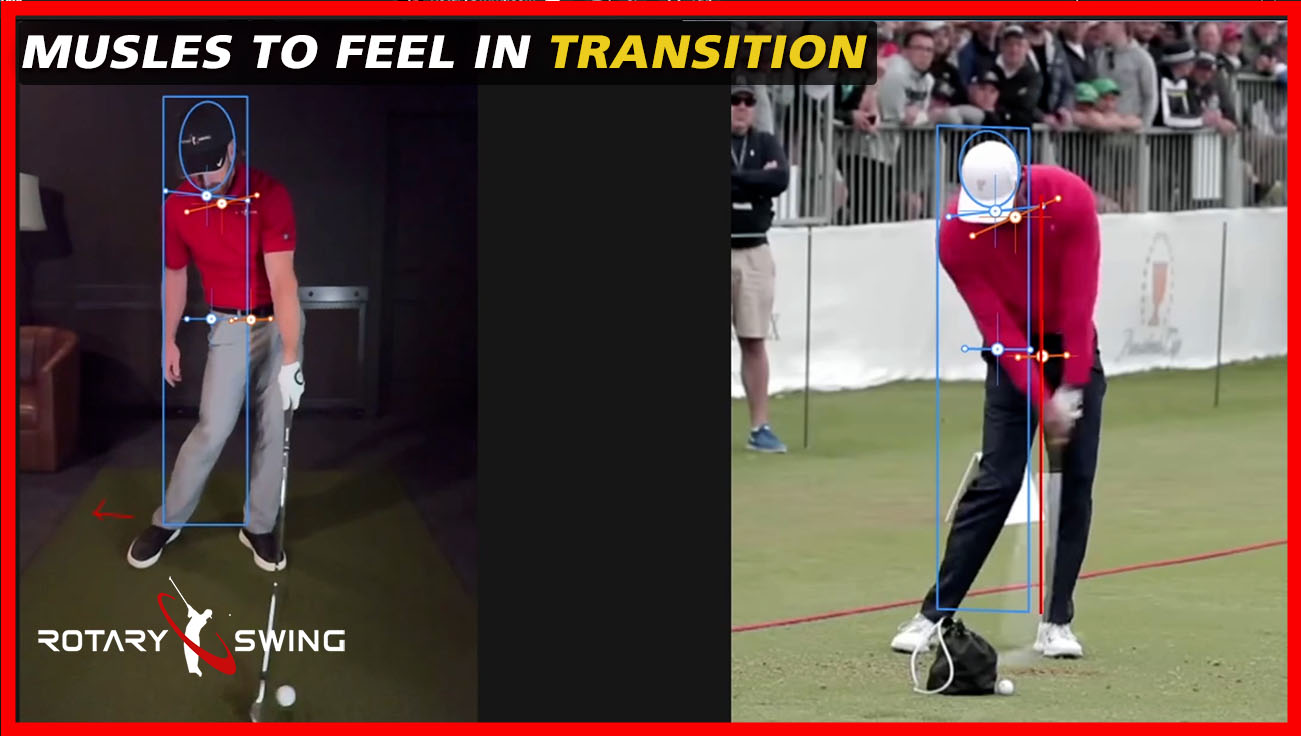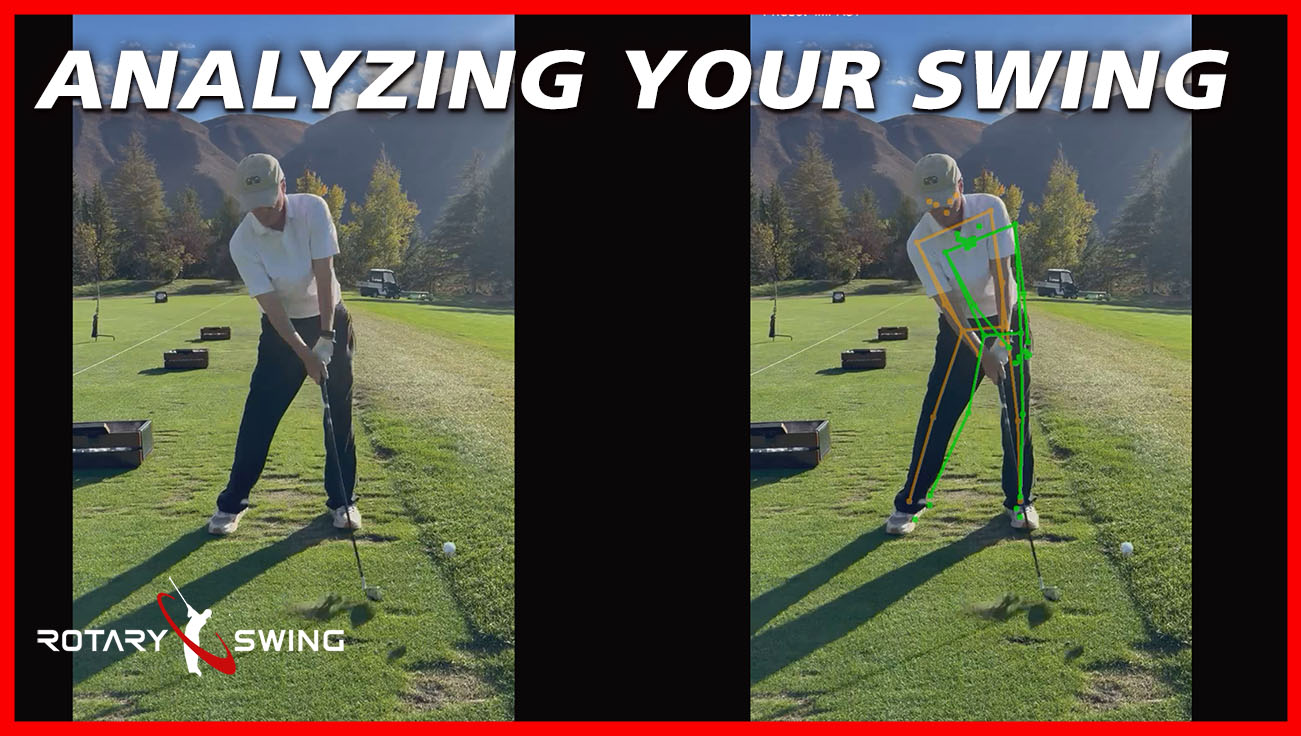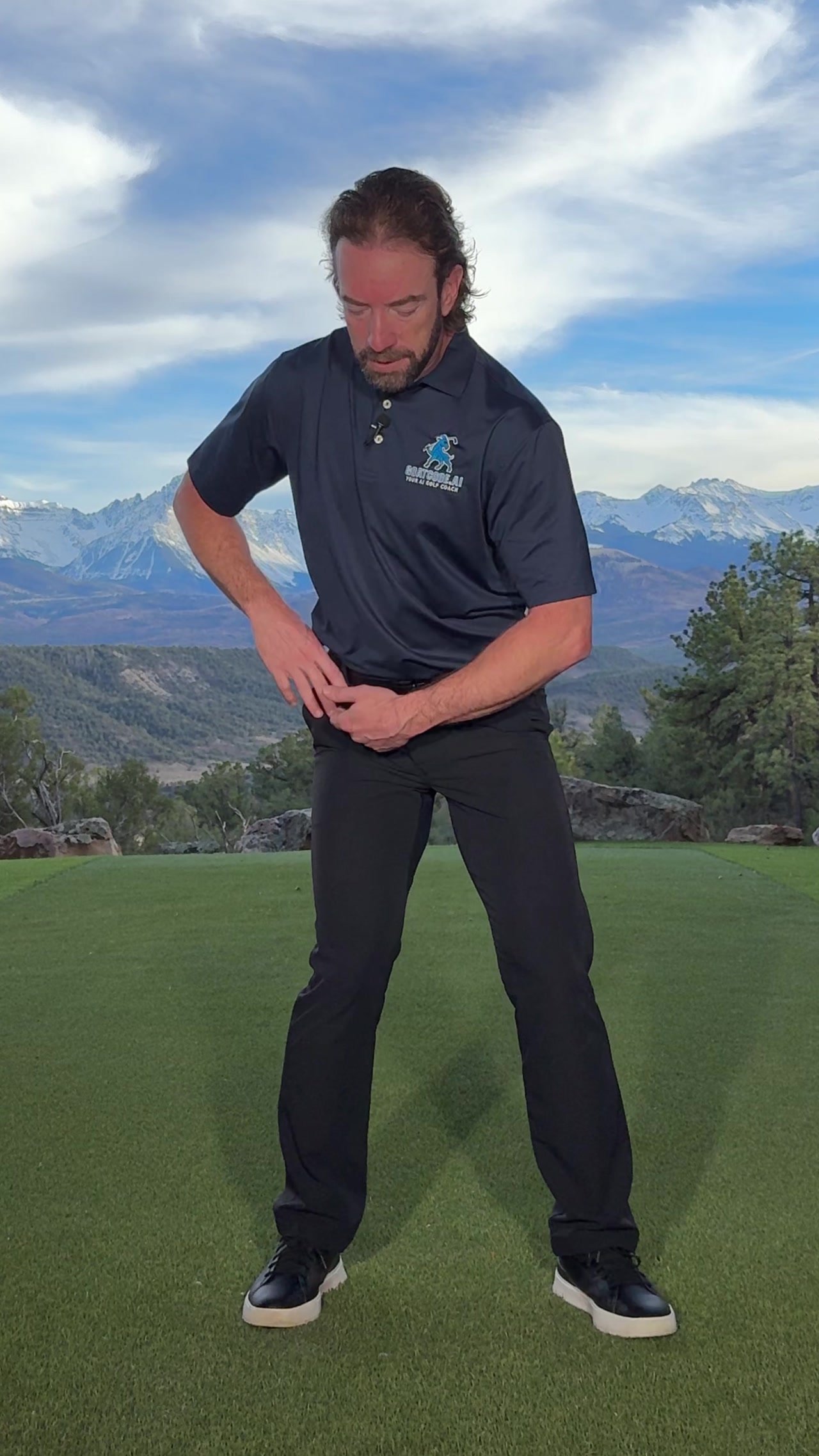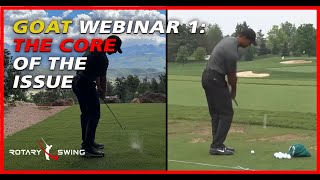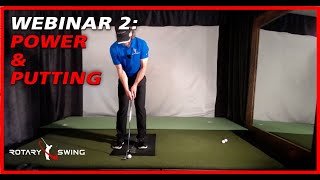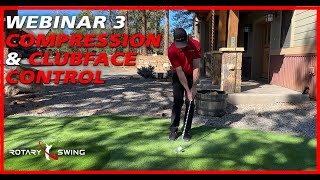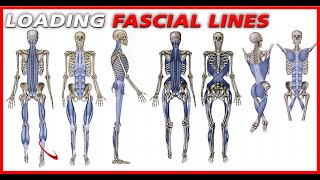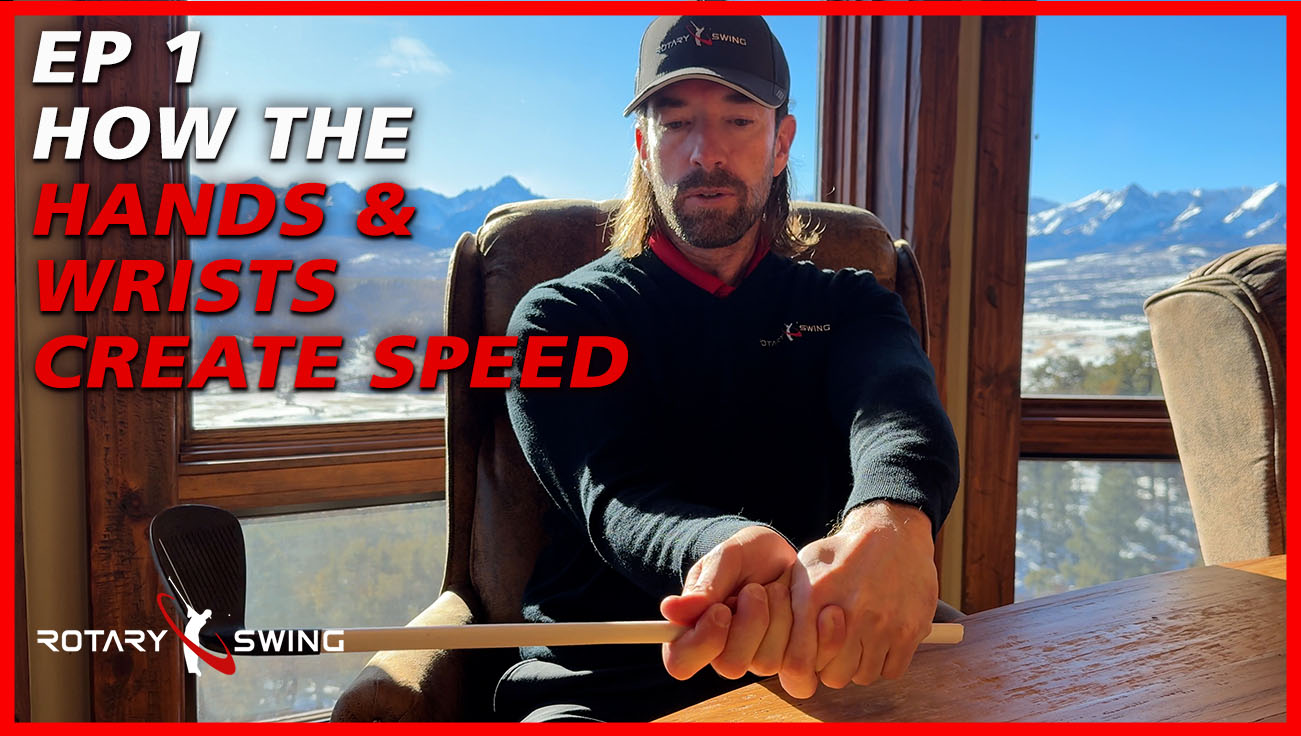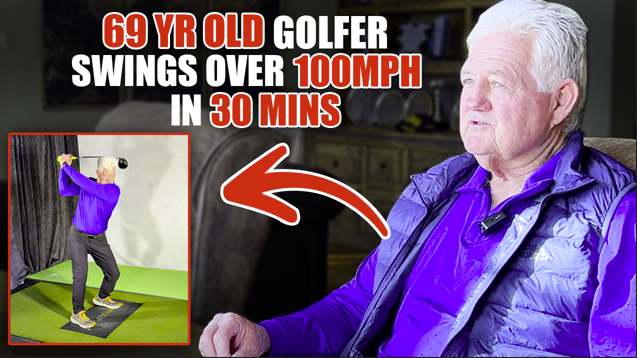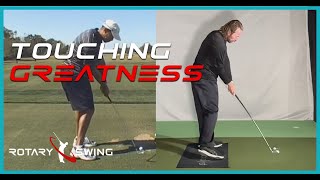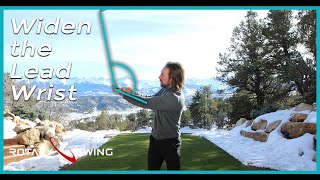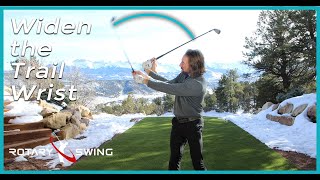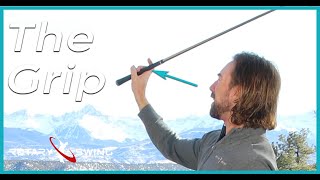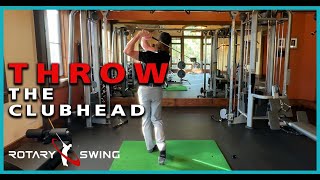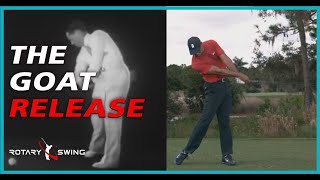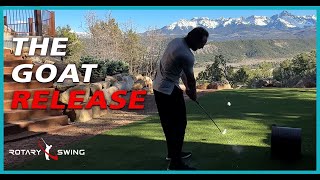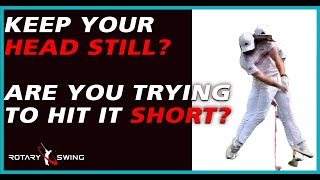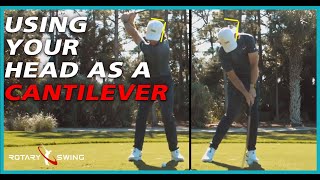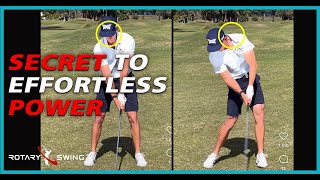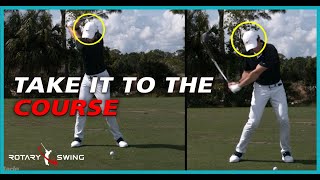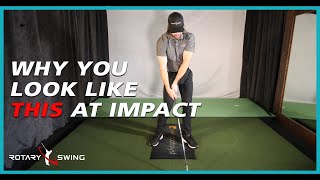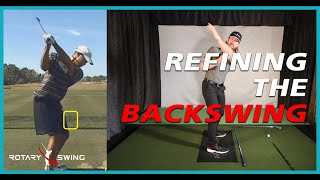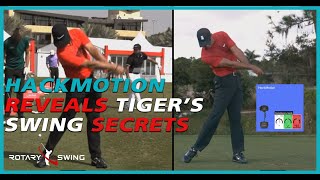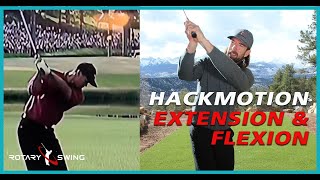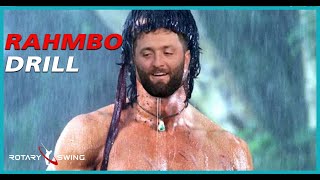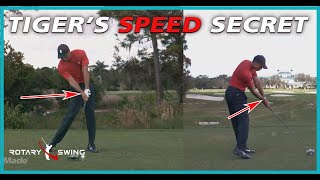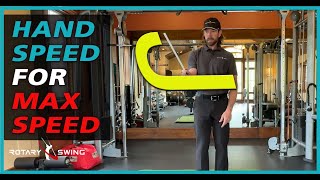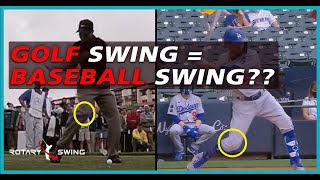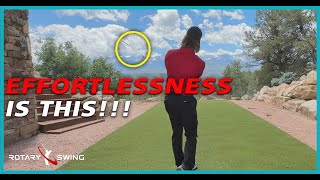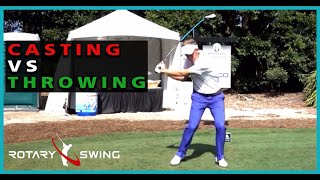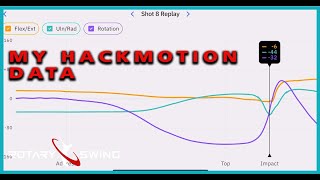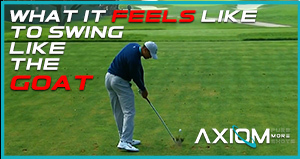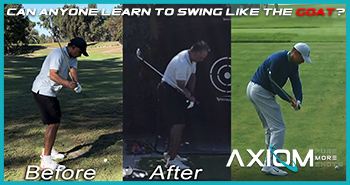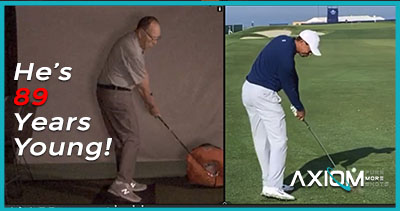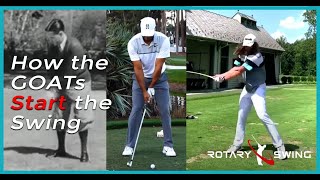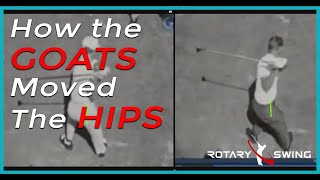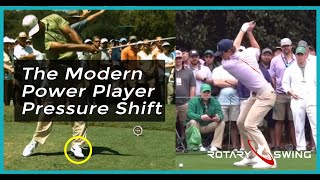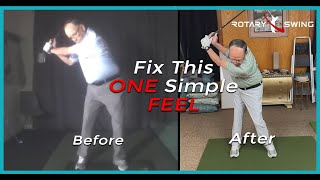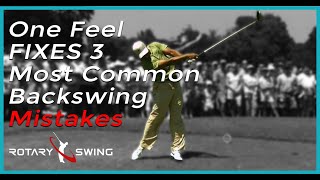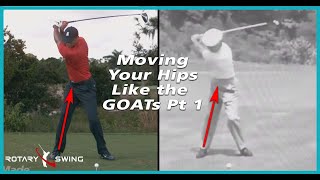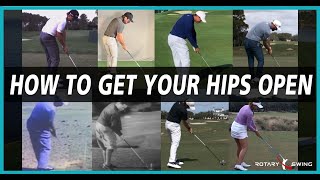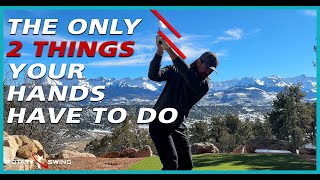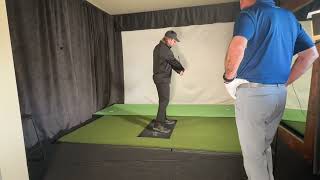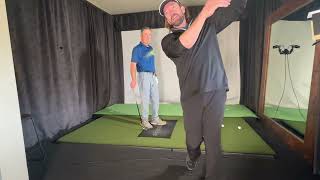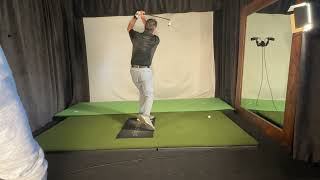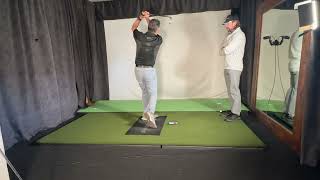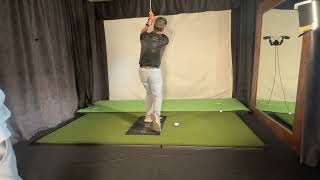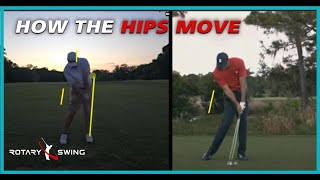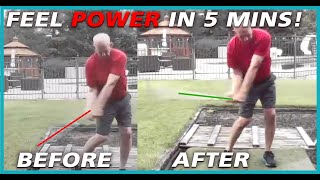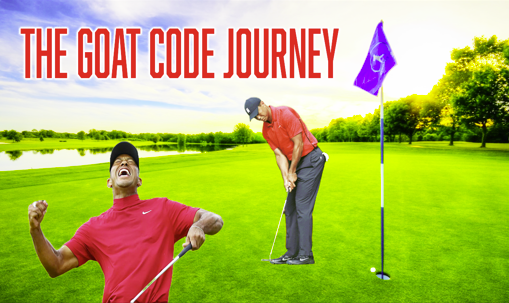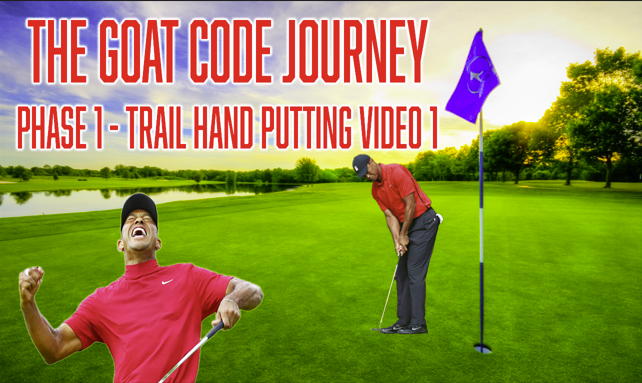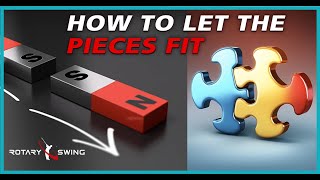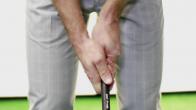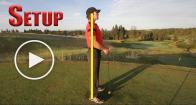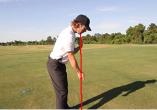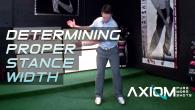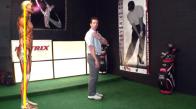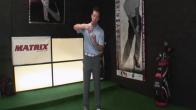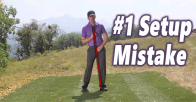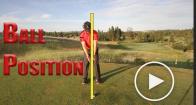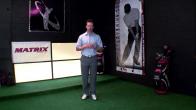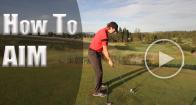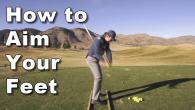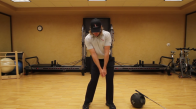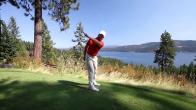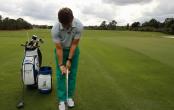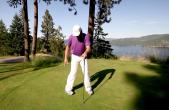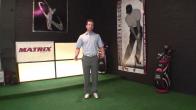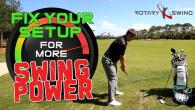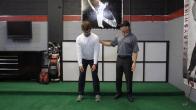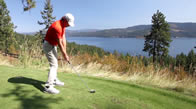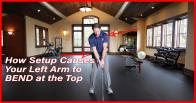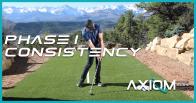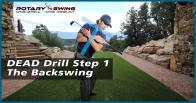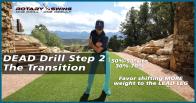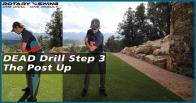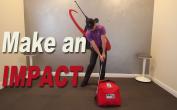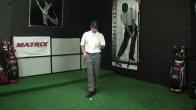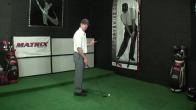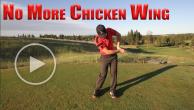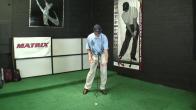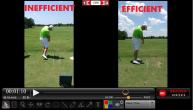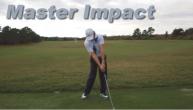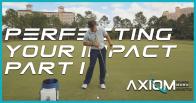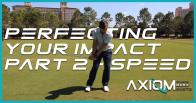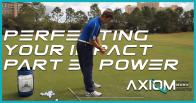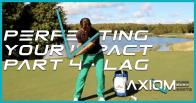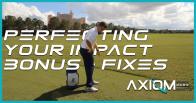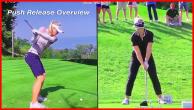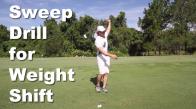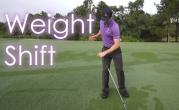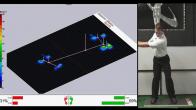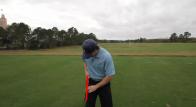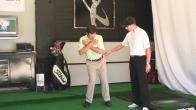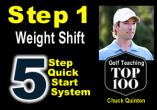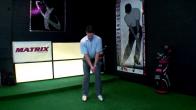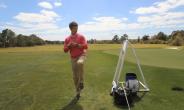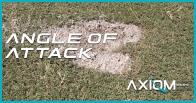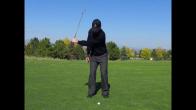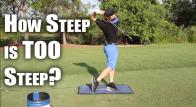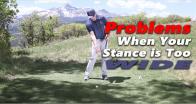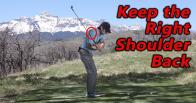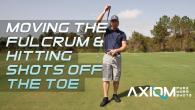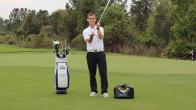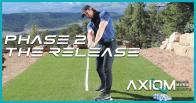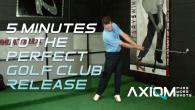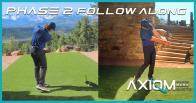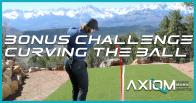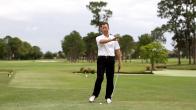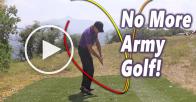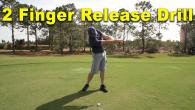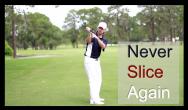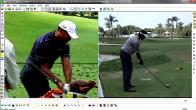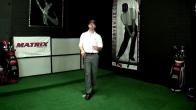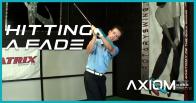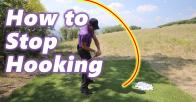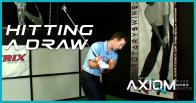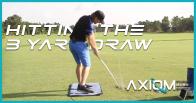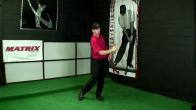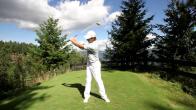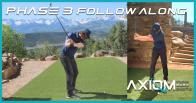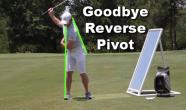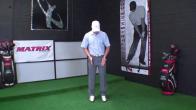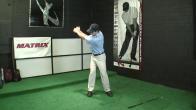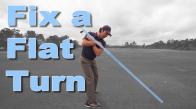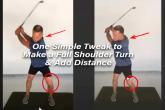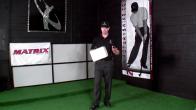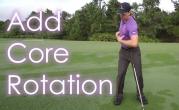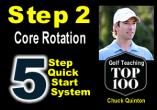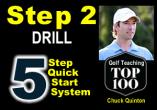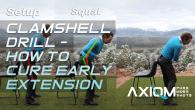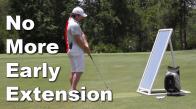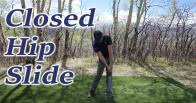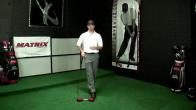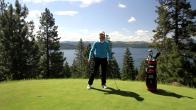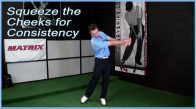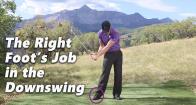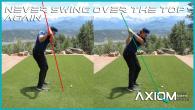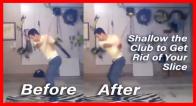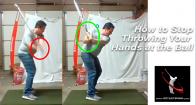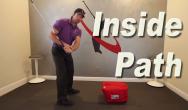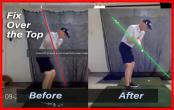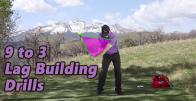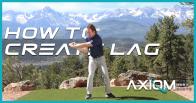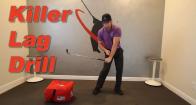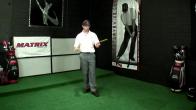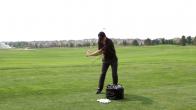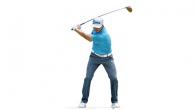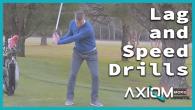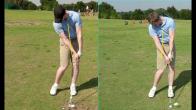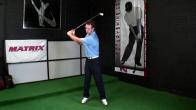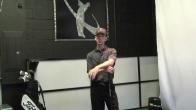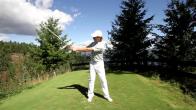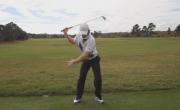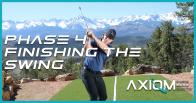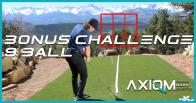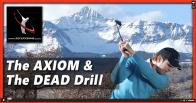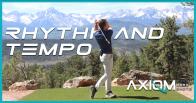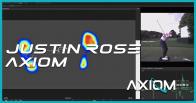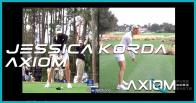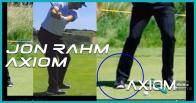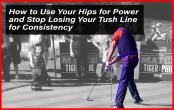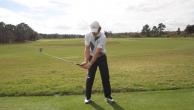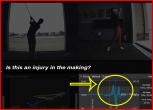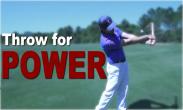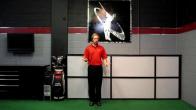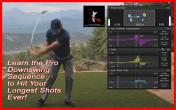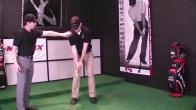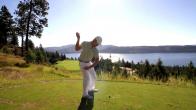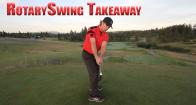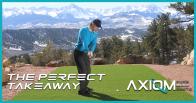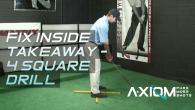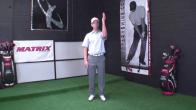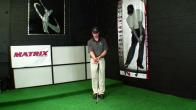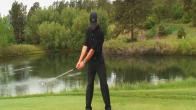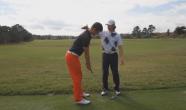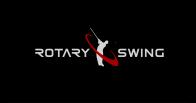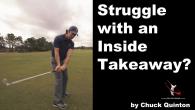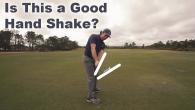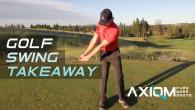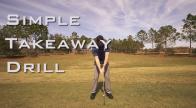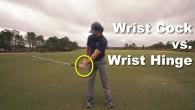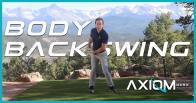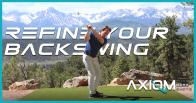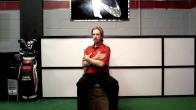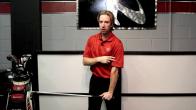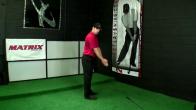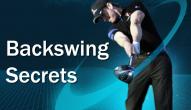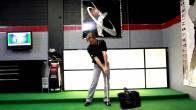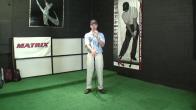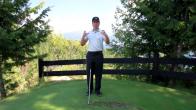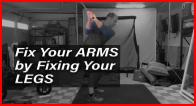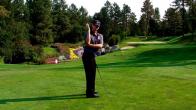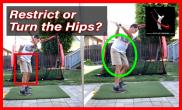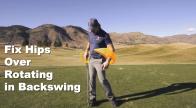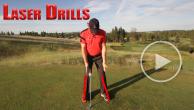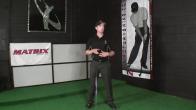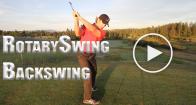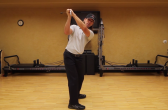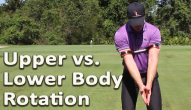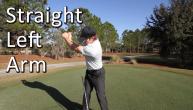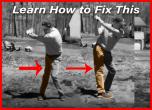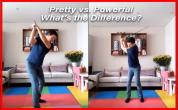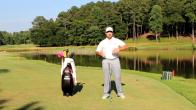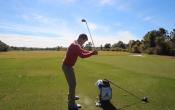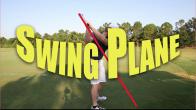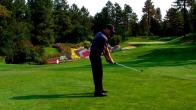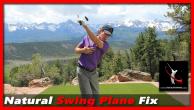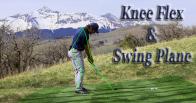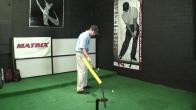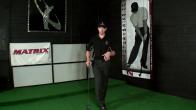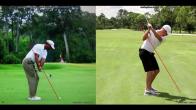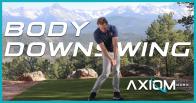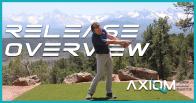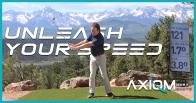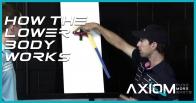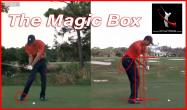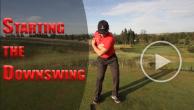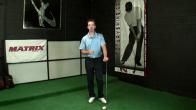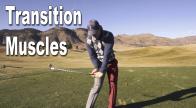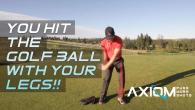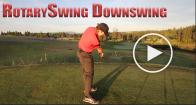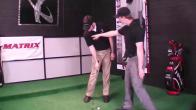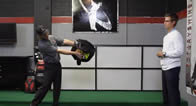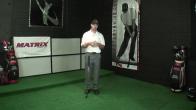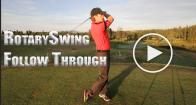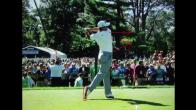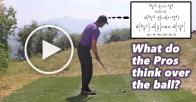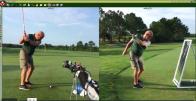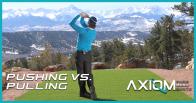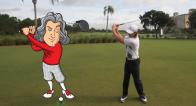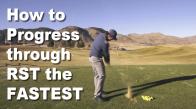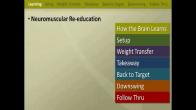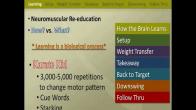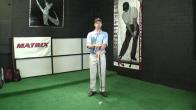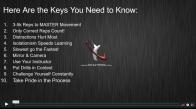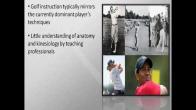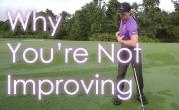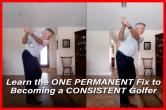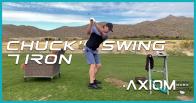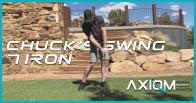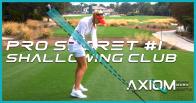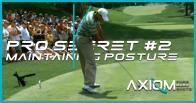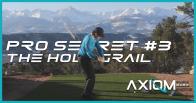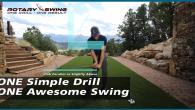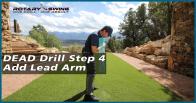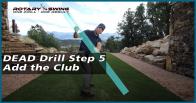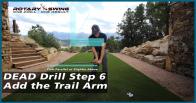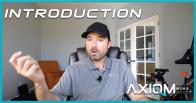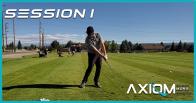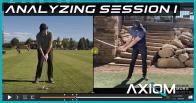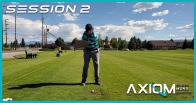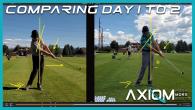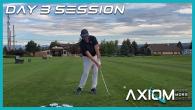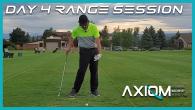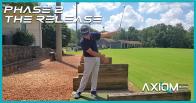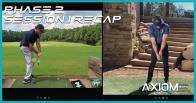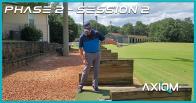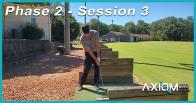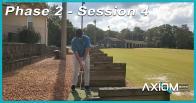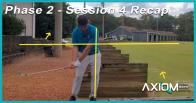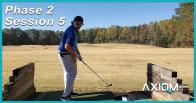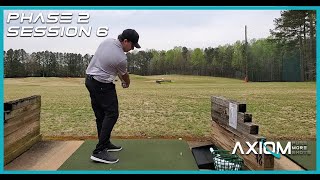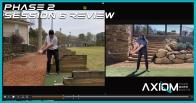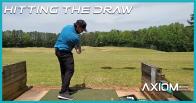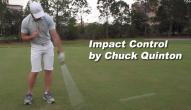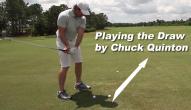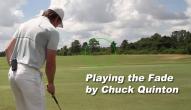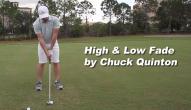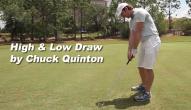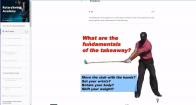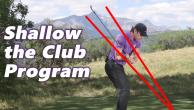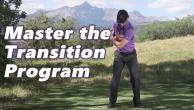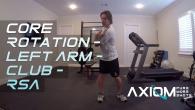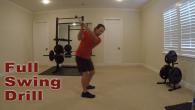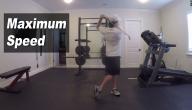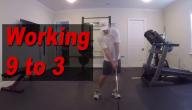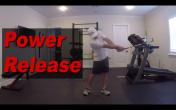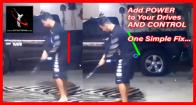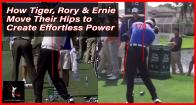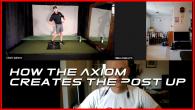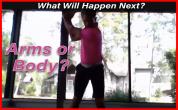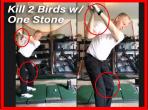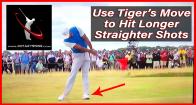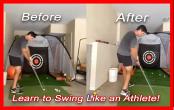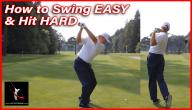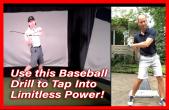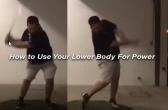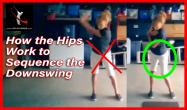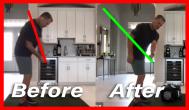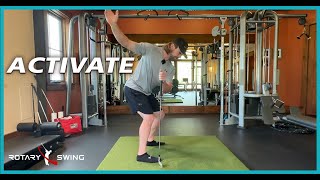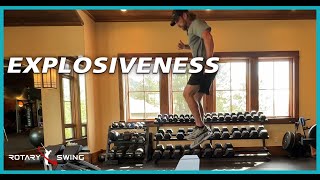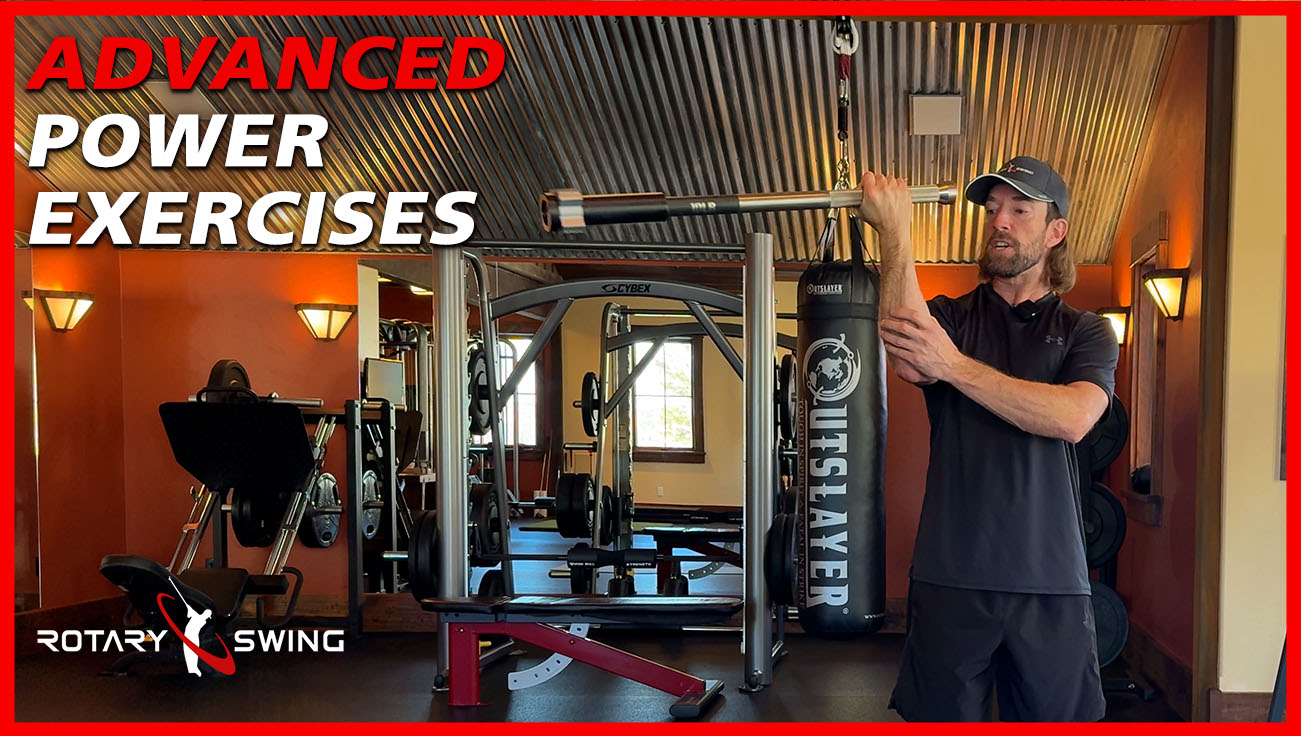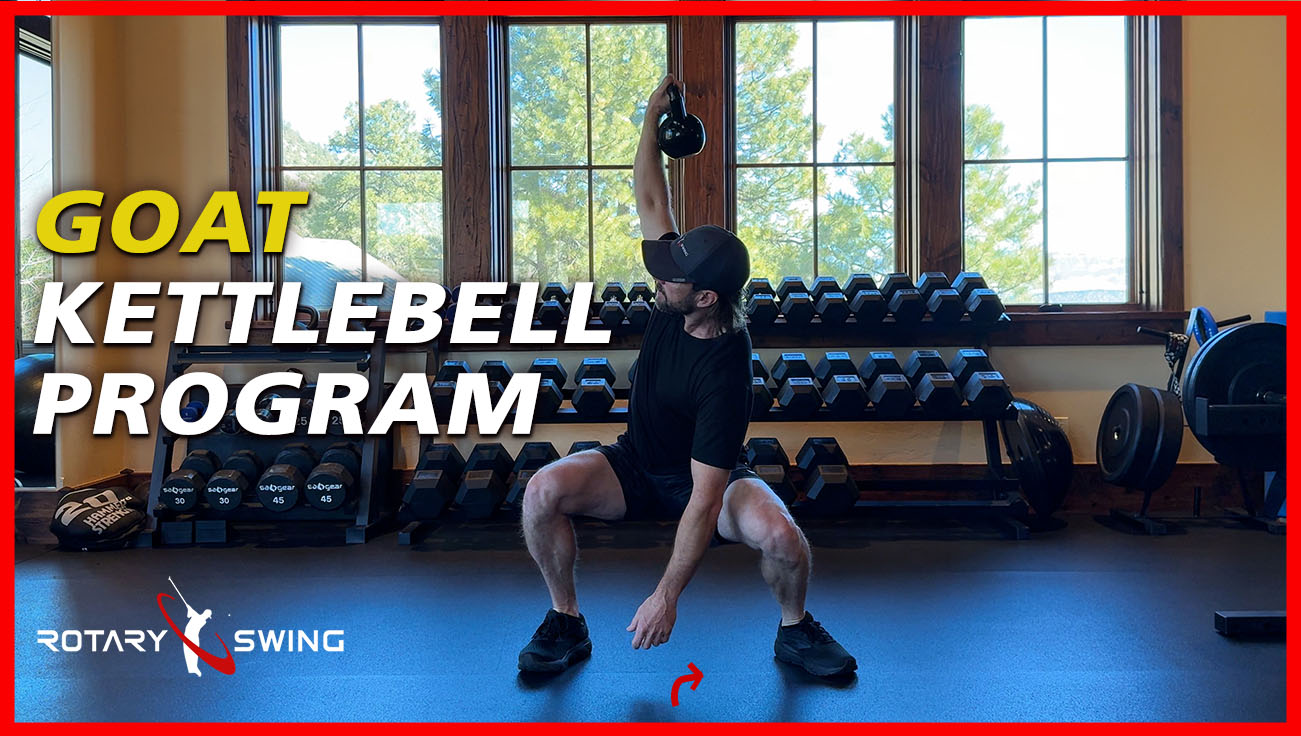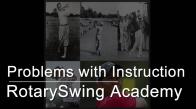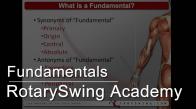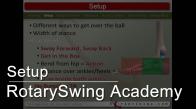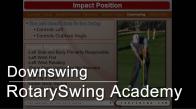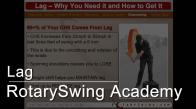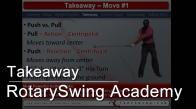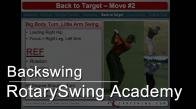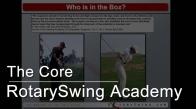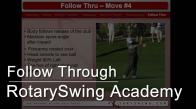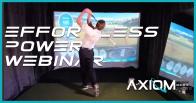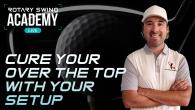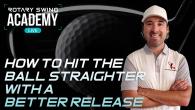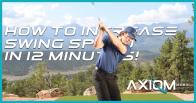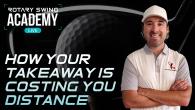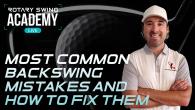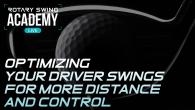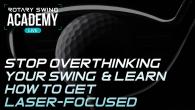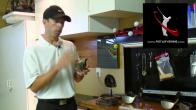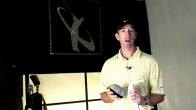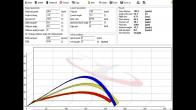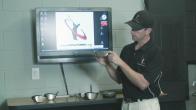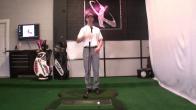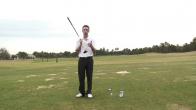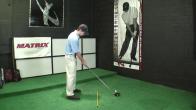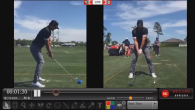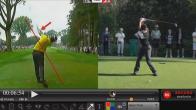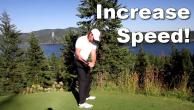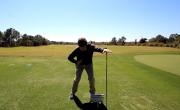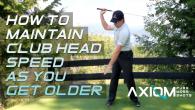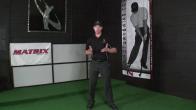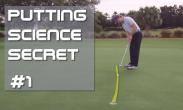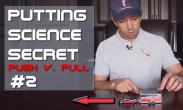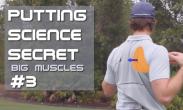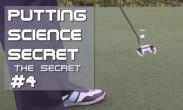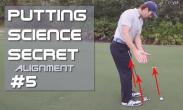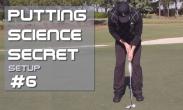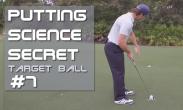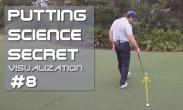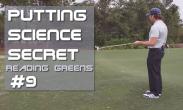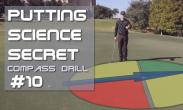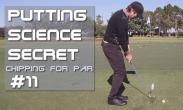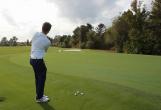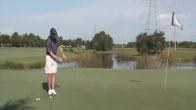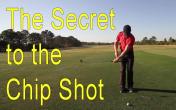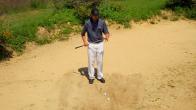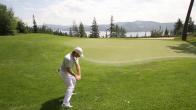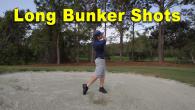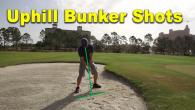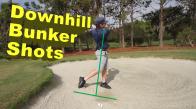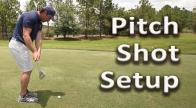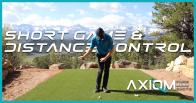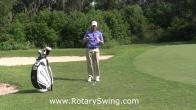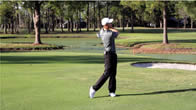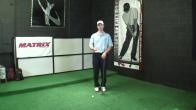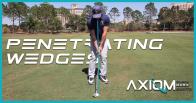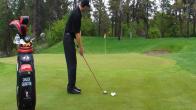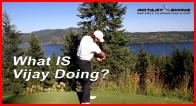AXIOM BootCamp 1, Craig Morrow, Oct 2021, Session 1
Session 1 of 4
Good morning, everybody.
Welcome to Axiom Boot Camp.
How are we doing today?
Hopefully everybody can hear me.
I'll be your humble host today, RST instructor Craig Morrow.
Y'all have probably heard that a lot if you've ever done swing reviews.
Let's see.
All right, loud and clear, Joel.
Thank you, thank you.
Everybody, start to pile in, get settled down.
We've got a lot to talk about.
Since this is the first time using this software, I just want to kind of give it a couple minutes just to make sure that the video feeds good.
Everybody can see me.
Everybody can hear me.
Because we're going to get rocking and rolling.
We're going to start to get some good swing stuff down tonight.
Let's see.
All right.
Chris Tyler on the board.
Everybody, you got Chris Tyler on the board to help answer some questions if need be.
Happy to have them here.
And thank you, Chris, for helping out tonight.
Video is good.
Looking good.
All right.
Fantastic.
Well, I hope everybody's doing well this evening.
Hope everybody's ready to work, learn a little axiom.
Chris and I have really revamped this program.
We really think that it's really going to help accelerate the progress to better golf.
Because isn't that what we all want at the end of the day?
All right, we got Diane from the UK.
Look good.
I'm going to give it just about a minute or two, make sure everything stays hunky -dory, and then we'll get started.
I'll kind of go over all the ground rules.
Hey, Greg, how are we doing tonight?
We got people from everywhere.
California, my hometown of Atlanta, Lots of good stuff.
Massachusetts, can't this go full screen?
It should be able to go full screen.
I can promise you, we did a lot of tests on our end.
This is full screen on mine right now, so you should be able to get that.
All right, got some Aussies.
Nice.
Just let everybody get settled in.
How's everybody doing?
Everybody excited?
Everybody ready to work tonight?
I see a couple comments.
I think Chris answered it about the PDF.
If you didn't get the PDF for this bootcamp, just let us know at the end, and we'll make sure you get a copy of that.
Puerto Rico.
Hey, Greg, how are we doing tonight?
I hope y'all's weather's been a little bit better than mine.
I think it topped out today at about 45, and the wind just now cut to about 15 miles an hour.
It's been a little bit of a chilly day.
No sound.
That's not good.
Hey, Joey, did you get that sound thing?
Cleaned up.
88 and humid here in Florida.
I know, Chris.
I can tell you what.
I don't miss the humidity that much.
We'll see what happens when it's below freezing for me.
Thomas over in Denver.
Well, I'm just down in Mantra, so I'm not too far away from you.
Hey, Donald, just wait till the end.
We'll make sure that we give an email address so that you can get that PDF.
All right.
Well, I've given it a little bit of time, so everybody ready to get started?
Ready to rock and roll?
I am.
Let's get going.
So I know that most of you, or hopefully most of you, have the PDF.
and I've got it on my screen right here.
It's going to wash out.
I apologize.
I've done literally everything that I can on my end to get it visual or to be able to see it from the camera.
So I'll explain to you what slide I'm on, but if you have the PDF, just kind of go along with me on So for those of you that did the first boot camp or with the dead drill, the rules of engagement are exactly the same, okay?
You must practice.
You must use a mirror.
You must use a camera.
But we're going to tweak that just a little bit for tonight because we're going to start to throw some feel in there.
If any reason you're unsure, just like with Chris on the board, remember, we have unlimited review groups.
We have swing reviews.
We have live lessons.
We have the community board.
Take advantage of that.
We are always here to help you and not leave you kind of wandering around in the wilderness.
scores you possibly can shoot.
No question is dumb.
Send it our way.
There's so many different ways to get ahold of us.
Okay.
And especially during this bootcamp, because you're going to get a lot of information thrown at you and you're going to get a lot of information thrown at you tonight.
That's not on this PDF.
So make sure that you take notes.
But if you're just unsure, there's so many ways to get to us.
Utilize it.
In order to get the fastest results, you have to drill in between each session.
Don't just do tonight's session and be like, all right, well, I've kind of already done that.
I got this.
I'm going to wait till Saturday when we start talking about release.
Today is very, very important.
And the days in between are very important to make sure that you get the reps in so that you can start to make these quality changes.
Take notes, track reps.
I think it's pretty self-explanatory.
Now, the first page of your slide is going to talk about setup.
And I'm going to get to that in a second.
When I'm doing a swing review or I'm teaching a student, I always try to set up a plan of attack.
I try to set up some goals.
I try to set up some structure.
Because I want the student to know, where am I trying to go?
But how am I going to get there?
is to do the entire axiom.
So if you did the last boot camp when we kind of did the dead drill and we added some body and then we added arm, today we're gonna do an accelerated version.
We're gonna get set up, we're gonna do our body, we're gonna add our arm, and we're gonna add the club.
I want you to start to get the big picture of what you're trying to achieve in the swing.
I want you to start to feel it.
One of the big questions I always get literally on a daily basis is, Craig, what does it feel like to be in this position?
What does it feel like when you post up?
This is going to be how you're going to improve your game is we're going to start to use feel.
And I'm going to throw the whole gambit at you because I want you to be able to use the rest of the boot camp to ask questions, to move through things.
But let's start to get away from paralysis by analysis.
Today, our goal is to start to get the whole big picture of axiom.
By the end of it, to have the whole thing put together and just start to refine the motion.
But I don't want you to go back to all right.
Well, do I have the club or my foot over in this position?
Is it perfect up here?
Am I over this way?
I don't want you to get back and getting overly mechanical about things.
This is a feel I gave.
I give all sorts of analogies in swing reviews, but I gave an analogy to one student.
I said, look, if you're a kid and you're learning how to throw a ball or you're going to teach a kid how to throw a ball, would you be like, all right, here's a ball and here's a hundred page manual.
Now use that and then figure out how to throw it.
I don't think anybody learns that way.
I don't think anybody would ever throw a ball if they did that.
You'd give the kid a ball, and they might step, and they're like, I don't know, what do I do with this?
And they throw it, and they might throw it higher.
They might throw it in the dirt.
But the more and more they do it, they start to develop a little bit of sense, a little bit of timing, a little bit of rhythm.
It might not be perfect, but they start to develop the actual motion.
And then you'd kind of get into the nuts and bolts if they needed to refine it, if they wanted to throw a slider or something.
But for the basic big picture, Do you want to bombard them with paralysis by analysis?
Here, here's a hundred different checkpoints you have to hit.
That's not the way anybody learns anything.
And that's kind of what I want you to do with tonight's session and what you're going to do with your swing.
I want you to start to feel it.
I want you to be a kid again.
I want you to make the swing athletic.
I want you to make it fun.
I want you to step in to what it's like to be in a better player's shoes, moving through positions, not chunking it up and getting caught up in all the hoopla.
Now, I'm going to start and we're going to go through some of these.
I'm going to have you get up and go down.
The comment screen, I'm going to leave to Chris for right now because I can't see it from where I am.
I would advise you from all the boot camps Chris and I have done, let's leave the questions until the end.
I'll stay here as long as I have to answer every single question.
But when we start to get too many questions kind of coming in between, It kind of bogs down the feed.
And I want to give you this information because I got a lot to give you today.
And then after that, I'll stay here.
Chris will stay on the board and we'll make sure that everybody knows what they're trying to achieve.
I just want to make sure that.
All right.
So we're good to go.
Now, most of everybody in this room have been with rotary for a while or they've done dead drill or RST five step or what have you.
So I don't want to spend a whole lot of time on setup.
But there are still some basic ground rules if you don't understand, okay?
So if we look at number one right here stance width, two inches outside of neutral joint alignment.
Well, basically neutral joint alignment is just if I were to mark a straight line from my hip socket through my knee joint through my ankle joint, this is a neutral joint alignment.
And all we're looking for is two inches outside that position.
Now you can get fancy.
And find your actual hip socket you can take two fingers put on the outer edge of your hip bone, use the first finger.
That's going to be where it is.
Or, for most people, pants, your belt loops pretty darn close, at least for me.
It is.
All we want is two inches outside of there and that's going to come back later.
I'm going to talk about that because it's kind of going to be important to us.
Axis tilt, something I know everybody's heard on the website.
Everybody must have axis tilt.
If you can't figure out how much you should have or how to get it, it's very simple.
Put a club down your sternum, put one hand on your belt, one on your sternum, get in the proper stance alignment and slide your lead hip or your left hip towards the target until the club hits you on the inside part of the leg.
That's going to create axis tilt.
It's going to keep your spine nice and neutral.
It's going to help us rotate.
There's tons of other stuff it does, but y'all are here for the fun stuff, not setup.
It's kind of boring.
Posture.
As flat as we can be.
Now, I know for some of you sit at a computer all day or 30 years, can't do anything about it.
Let's try to get the posture as good as possible.
If you're struggling with getting it, just put a club down your spine.
Put one on your tailbone, one on your head.
Drop your butt back.
There we go.
Easy peasy lemon squeezy.
As I'm in this position, I'm going to go ahead and skip to number five.
What you will notice is as I added posture, and then I softened the knees, I let my weight kind of recenter.
I don't leave my weight back on my heels as I drop my butt back.
I let my weight kind of recenter.
You don't want all your weight towards the heels.
It's something that Chris, Chuck, and myself have seen a lot that a lot of players set up with weight on their heels.
So as you get into posture and you add your knee bend, just make sure you get nice and balanced.
You need to somewhat be in a position where if I came at you from any angle, I could push you and you wouldn't fall down.
And if you're too far back on the heels, I can walk up in the front and tip you over, okay?
So let's not get bogged down with setup stuff.
It's going to be more important down the road.
Just make sure that your stance isn't too wide.
Make sure you have a little bit of axis tilt.
Make sure that when you get into setup right here, your weight isn't all the way back on your heels or all the way out here on the balls of your feet because you're not going to be able to move.
Okay?
Now to the fun stuff.
So who's ready to work tonight?
Because I'm going to put you to work.
And when I was doing all of those clinics down in Orlando, they used to call me the drill sergeant.
I'm going to make y'all drill tonight.
I want y'all to start to improve, and I want you to start to feel this.
I'm going to split this section from the next one, and then I'm going to put everything together for us, okay?
And I apologize about the washout.
I can see it right there.
But right now I'm on day one axiom footwork.
The primary movement and the one thing you must not forget is how you're rotating around your right foot.
Now, for you lefties out there, that's going to be your trail foot.
Most of us are right-handed, and I apologize for the lefties out there, but I'm going to kind of teach it in a right -hand bias.
Any questions, I'll make sure to straighten it out.
Left-handers out there, it's your trail foot.
Right -handers, it's your right foot.
understand is that you're going to rotate your pressure clockwise around your right foot.
It is the absolute must.
If at any point in time between today, Saturday's boot camp, two months from now, you're having problems with your golf swing and the first thing that you don't check is your right foot, we got problems.
This is going to kind of be your vortex generator for the swing.
This is the primary movement.
This is what we see all the time.
This is the one when people start to slip and fall in their swing and things don't go in the right direction.
The very first thing that we look at is we look at their right foot and we're like, how are you doing on your right foot?
And you'll without a doubt see that the pressure isn't moving correctly.
The pressure must not stall out and it must be continuously working clockwise.
around the perimeter of your right foot.
Now, when you're moving around this foot, and hopefully you can see this on the PDF, you're gonna rotate, if you can imagine a clock, 12 in front of you, six behind you, you're gonna rotate all the way around the perimeter to six o'clock, nine o'clock, 12 o'clock, three o'clock, six o'clock, nine o'clock, 12 o'clock, in a clockwise direction now.
I know some people get clockwise confused.
A lot of live lessons where they start going the other direction.
Make sure that you're looking at the clock down on the ground from your perspective.
That's where the clock is facing.
Your weight's going to shift between 6 and 9 o'clock, and then you're going to get off the foot or what we call the merry-go-round.
And I'm going to show you all this stuff, so don't worry about it.
These are just some friendly reminders.
Your right knee is going to move towards your left knee, replacing your left knee.
Okay?
So you're going to move this pressure around the foot, and then your right knee is going to replace your left knee.
Okay?
I'm going to show you.
Don't worry.
Your hips are going to be cleared, and the lead leg or the left leg is going to be fully posted.
It is a must.
That you post up.
It is a must that you clear the hips because you need to create the space for the arms.
To work down into impact and get a nice, powerful release, you have to use those legs.
Okay, so before we start talking about anything else on this move, if you can and you have the space.
I want everybody to get up, I want to put you all to work today.
Okay, so if you can, I want you to get up and do this with me.
Don't worry about getting into a perfect setup or anything right now.
The only thing that I care about is the fact that you get in a somewhat proper stance with.
That's the only thing that I really care about right now.
So I want everybody to get up, and I want you to start to move through these positions, and I want you to start to feel the same things that I'm feeling right here.
So let's stand straight up and down.
Life is good.
Everything's balanced.
Nothing crazy.
And all I want you to do.
Is to start to feel the pressure move in a clockwise manner around your right foot.
And I don't want you to stop, I just want you to feel that movement, I want you to loosen up, and I want you to just feel just moving.
Pressure around that right foot, for you lefties, those trail foot, and for a lefty, it's going to be counterclockwise.
I just want you to trace the pressure all the way around your right foot.
6, 9, 12.
3 o'clock, 6, 9, 12.
And loosen up.
Okay?
I want you to start to create this little orbit.
My ankle's creating a little orbit.
My knee's creating a little orbit.
My hip's creating a little orbit.
Just start to feel this.
Just move the pressure.
You don't need to be like this and dancing all over the place and rolling on the outside of the foot.
You can exaggerate a little bit in the beginning.
No problem.
But the big thing I want you to get is just the feeling of moving the pressure clockwise all around the foot.
Feel.
Don't worry about anything else.
You can see my head's moving right now.
I don't care.
I just want you to get the feeling of moving this pressure around the foot.
Okay?
Now, if you'll notice this little orbit that I'm creating with my knee and my hip, what's going on right here?
You'll notice when I get to 3 and 6 o 'clock, my weight's moving into my trail side, moving back behind me when I get to 9 o'clock.
Where's my left hip going?
My left hip's reacting and moving.
over to the left side.
So you can see a little bit of what I was talking about earlier.
You send me a swing or you send me a swing review and you're like, Craig, I don't understand because when I come down to my downswing, my weight's back on my right foot.
Well, how can I have my weight back on my right leg at impact if my pressure's on the inside of my foot?
It's going to be a little wonky.
Okay.
So if you notice you're not shifting weight, go back to your foot.
This pressure movement forces this orbit, it forces your hips to move in a certain manner.
Okay?
So if you have that feel and you have that pressure movement in the right foot.
Hold on, wait a second.
Okay, sorry.
I saw something.
I got a little message that something cut out.
So if you have that feel and you have that pressure movement, what I want you to do is use this image up here.
When you go back around the clock and you go to six, when you get to nine o'clock and you start to get to that big toe, I want you to go to the pressure, three, six, nine, and when you get to that big toe, I want you to drive that big toe and right knee.
Towards the target, or 10 11 get back to 9 o'clock, get off the foot.
If you're moving your weight around this perimeter, as you go from 6 to 7 to 8 to 9, my hip has no choice but to start to move over to my left side.
And if you get off that toe, what does my left leg do?
I post up.
It gets my hip out of the way.
It forces me to move my weight.
and post up.
Now in the golf swing, this movement's going to be pretty quick and it's actually pretty small.
But for right now, if you're a little bit exaggerated where you kind of have a little bit of a hula hoop motion going, no problem.
I'd rather you start to get it down today.
We've got plenty of time to refine it.
But I want you to feel this pressure movement and get off that toe.
And if you notice that you're like, all right, well, I'm moving around this foot and I'm getting off that toe, but my left leg's not posting up.
Be dynamic with it.
Be forceful with it.
Move around that pressure.
Get off of it.
Get off the foot.
You're being too lazy with it.
You're thinking about things too much.
Notice how this automatically starts to create a ton of things that we see in the swing every day that we have to correct.
It's forcing me to move my hips.
It's forcing me to post up.
All I want you to do is think about the feeling of that foot around the perimeter, off the toe.
around the perimeter, off the toe.
And when you push off that toe, let your right knee replace your left knee.
Okay?
So for right now, if you're a little bit tired, a little bit winded, you can sit down, because I'm going to talk about some other stuff.
But the most important thing that you need to write in your notes, you need to do anything with, you have to use the right foot properly.
Okay?
If your swing starts to fail, That's the first thing I want you to check.
Don't look at stupid club positions or what the ball is doing.
Look at your foot.
The vast majority of your problems are going to come about because you're not moving this pressure shift properly with your right foot.
This is why it's primary.
This is why it's the first slide after boring setup.
The right foot movement's all well and good, but eventually we have to add some things to the equation.
And what I want to do tonight is I want to add the arm, I want to add the club.
I want to get full swinging.
I want you to get this whole big picture feeling of So let's talk about what's going on with this.
I'll give you some demonstrations and then we're going to get to work.
So for right handers, the right arm moves in a clockwise fashion.
Now remember, This is from your perspective, the golfer's perspective, not mine.
So the right arm is going to move in a clockwise fashion.
So if you're just facing straight ahead, you've got 12 here, 6 here, 3, 9.
Clockwise.
What direction is your foot moving?
Clockwise.
What direction does the swing move?
Clockwise.
Don't overthink it.
So what we want to do is we're going to start to take this clockwise motion and we're going to start to blend it a little bit with our foot.
This is going to start to give you a little bit of sense of rhythm, a little bit of sense of timing.
It's going to give you a flow, a feel for a movement.
So the right arm must be moving clockwise.
As you're moving your right arm and we start to combine it with our foot, when we get up here at the apex of our right arm swing, Your weight is going to be at six o'clock on the foot.
Pretty simple to remember.
I'm at the top of my backswing.
My weight's at six o 'clock on the foot, okay?
The arm continues the clockwise motion during the weight shift, and we're going to release it when we get off the big toe, or what we call getting off the merry-go-round, because the foot's kind of acting like a merry-go-round motion.
So as the arm goes up clockwise and we're back here at 6 o'clock, and we start to shift the weight and move the pressure to the inside of the foot, the arm and hand are going to shallow out, and then we're going to release that when we get off the big toe, forcing that post up, forcing that clearing of the hips, creating that space for this club to come down.
Okay?
Now, some people I know, Don't have the space to swing a club right now?
If you don't have a space to swing a club, don't worry about it.
You can do it after the session.
I at least want you to get up with me right now and do the foot motion with the arm, though.
Okay?
If you've got the space to do it, do it.
If you've got really low ceilings, I understand.
But if you have the space to do it with a club, even better.
Because what I want to do is I want to add this arm to the right foot motion.
And I want to add a club to the motion.
And I want to give you some faults and fixes and some checkpoints.
So first of all, don't worry about the right foot right now, okay?
Let's just focus on the arm.
I just want to make sure you get it going clockwise.
For righties, take your right arm.
Your lefties, take your trail arm and go counterclockwise.
But for righties, we're going to go clockwise for right now.
I just want you to take your right arm and start to move it in a clockwise circle, okay?
Just move it in a clockwise circle.
Nothing fancy.
Just a nice big old windmill.
Okay?
If you can start to get this motion, don't stop.
Just kind of keep it going.
Keep the feel of this.
What I want you to do is start to add a little shoulder rotation to it.
The old shoulder blade glide.
Try to keep it going clockwise and add some shoulder rotation to it.
Even with all the metal in my shoulder, I can still rotate this shoulder a little bit, making a clockwise motion.
Rotate.
Okay?
If you can get that feeling, let's combine it with our foot motion.
Get a proper stance.
Hinge forward a little bit.
A little bit of axis tilt.
Nothing crazy.
All I want you to do.
Get that arm going clockwise.
When you get up here to the top, feel how the foot goes to 6 o'clock as the arm's at the apex.
Foot's at the 6 o'clock as the arm goes to apex.
You're just going clockwise around the foot.
Clockwise around the foot.
And what you'll see right now, because I've done it a few times, you'll see I'm already trying to get my weight back over and post up because I'm feeling that pressure in my foot.
Number one thought is move the pressure around the foot.
Number two is get the arm going clockwise with a little bit of shoulder rotation.
Nothing fancy.
Doesn't take a whole lot to hit a golf ball well.
Just have to have some basic movements.
And all of us can do this.
So when you start to get the feel for 6 o 'clock when the arm's at the apex, move that pressure to the inside of the foot and start to get off that toe and let your arm release.
Around the foot, inside, get off the toe, let the arm release.
This is the air guitar motion.
I do think that Van Halen did call Chuck after he released the video.
I do think that they called him.
Clockwise, 6 o'clock, inside of the foot, push off the toe, let the arm release.
Start to get a feel, a sense, and rhythm and timing for this.
Moving the pressure.
At the top at 6 o'clock, get off the foot, let the arm release.
The more and more you do this, the more and more it's going to start to feel a little bit more blended.
The more and more it's going to, wait a minute, this kind of makes sense a little bit.
Just move my arm and get it off my foot.
This is kind of a natural motion.
It's kind of all that we need to achieve in the swing.
Make sure it's going clockwise.
You got a little rotation right here, it's okay to pick the arm out in front when you're beginning like this.
No problem.
We move back to six So if you can get the feeling for the arm and you can get the feeling for the foot, you're starting to create a little bit of sense and rhythm and timing to this.
Keep the pressure.
Keep the arm going clockwise.
You're up here at the top.
You're at 6 o 'clock.
You're moving the pressure to the inside, that kind of 7-8-9 position.
The arm's shallowing out.
You get off that toe.
Left hip clears.
Left leg fully straightens.
Start to get a sense and rhythm for this.
If you're moving a little bit exaggerated right now, don't worry about it.
I mean, I don't want you falling all over the place like this.
But if you've got a little bit of movement to you right now, you can see my head's moving a little bit right now.
It's okay.
I'm going to button it up.
I want you to get the feel, the rhythm.
Rhyme to this.
Develop that feel.
Okay?
Now for those of you that can get this foot, you're feeling the foot.
Okay?
Okay.
Just making sure.
You're getting the feel for the foot.
And you're getting the feel for the arm.
If you've got a club, What do we got to lose?
Let's have at it.
Now, the same thing that we just did with the arm.
If you want to pick it up in front of you to start out with, no problem.
I'm going to move a little bit more over here.
All we're going to do is we're going to get this club in our hand.
We're going to get this stance width.
Nothing too crazy.
We're not looking for perfection.
Just proper, decent stance.
A little bit of hinge.
A little bit of tilt.
And just start to swing the arm up.
With that rotation, getting that clockwise motion.
As you make that clockwise motion, get that moving around that perimeter back to six o'clock to nine and get off the toe and let the club release.
Up here, clockwise around the foot, get to nine o'clock, let the club release.
Clockwise, letting it rotate.
Always thinking about clockwise with the foot, clockwise with the arm.
Clockwise with the club and you'll start to feel you get to a point where it's like, there's a point of no return.
This pressure gets the inside and you want to push off that toe and clear that hip.
Create space for that arm and hand and club to come down clockwise and get off that foot.
Don't think about it, feel it, feel it I don't want questions of, Craig, what does it feel like?
I know these spots and all that, but I don't know what it feels like.
You should know what it feels like now.
This is what all of the best ball strikers do.
I didn't realize it.
It's kind of even what I did in my own swing.
When we had the left hand, I'll talk about that in a second.
Clockwise around the foot.
Get off at 9 o 'clock.
Let it release.
Clockwise around the foot.
Clockwise with the arm and shoulder.
Let it release.
Keep focusing on the foot.
If this is too much for you to handle now, that's okay.
I still want you to try it.
Even if you kind of look like an octopus falling out of a tree right now, it's okay.
I still want you to try it.
That's why we got the week to work on and rep.
If you have to kind of go back to body steps because, you know, the foot just don't quite have yet, no worries.
Work at your own pace.
Bob Ross, this is your world.
Right arm clockwise.
Clock rise around the foot.
Nine o'clock.
Get off the foot.
Clockwise.
Shoulder rotates.
You're moving the perimeter of the foot.
Moving the pressure back to six o'clock.
You're at the apex.
As the pressure starts to go to inside, arm and hand and club shallow out.
Push off the big toe to get that left hip out of the way.
Get those hips cleared.
Create space for that club to release.
Up here to the top.
If the right leg straightens a little bit, no worries.
It's not a must that you keep this right leg perfectly flexed during this motion.
If you have to allow it to straighten a little bit, no problem.
I want that hip to rotate.
I want you to move in this orbit.
Don't be so bound.
Don't be so locked up.
You want to feel this.
It's a rhythm.
It's a dance.
Stay loose.
You're fluid.
It's not about binding yourself up and feeling max engagement.
Now what you'll notice, if you have a camera on yourself or you've got a mirror right now, if I'm going through this clockwise motion, whether you're picking it up right here, you're starting to blend it a little bit more into a backswing.
You're moving the pressure around the foot.
When you get up here at the apex, you'll notice that your right hip starts to move a little deeper when you get to six o'clock.
So you're starting to load and you're starting to maintain the proverbial tush line early, not coming off of it early.
If you're not going back to six o'clock, where's my hip going?
You're going from here.
When you get up towards the top, pressure's back at six, the arm and hand's at the apex.
Now as I start to move in that perimeter, What's my right hip doing right now?
It's staying deep, it's staying back on that tush line.
Because I'm not just.
The movement is quick, don't get me wrong, but I'm not just going 6 12.
I'm doing that early extension.
We're up here at the top, going clockwise.
And as I go six, seven, eight, nine, the club's shallowing out my tush, line's staying back as I get to nine feel the weight, get off the foot.
If you struggle with tush line, struggle with shifting weight, don't look at the clock, look at your foot.
There's no way to lose tush line if you're moving around the perimeter of the foot.
The butt's going to stay back.
The old squat to square.
The old clamshell.
Get to 9 o'clock to get that left hip out of the way and let the club release.
If I see anybody in this group ever swinging over the top again, I used to start the clinics where everybody failed.
I'd whack them with this end of the club.
Now I'm going to start with this end now.
It's impossible if you're moving clockwise.
To come over the top, it's impossible.
That's counterclockwise if you kind of struggle with this visual a little bit initially, I wouldn't say this is the best way.
But if you're struggling with picturing this clockwise, especially when you start to hinge forward a little bit and you start to move it around, you're like, Well, I can kind of get this.
If I pick it up here, I can feel my foot and I can get the clockwise.
If I start to kind of make a little bit of a normal backswing with my right arm, it's just not clicking.
Like I said, this isn't perfect, so take this with a grain of salt, but it's worked for a lot of my students.
Chuck has a really good image of this clock.
Viewing it from the golfer's perspective, and this is slide six.
if you can't see it.
Picture the clock right here for a second.
Now, the clock's always our perspective and facing in front of us, but if you're having a hard time, like, all right, Craig, I can get it kind of picked up right here, but making it into the motions a little bit tough, picture it right here for a second.
So this would be my kind of clock, okay?
So if this is my clock, just as Chuck's clock has just on your PDF, 12 o'clock would be here, 11 would be there, one would be there.
So as you start to make the backswing and rotate, you're just kind of going 11 o'clock, one o'clock as you're making the foot motion, 11 o 'clock, one o'clock.
That visual of having the clock right there might help you see it a little bit better.
Now remember, this is always in front of us, but just kind of picturing it almost a little bit more 2D for a second.
Sometimes helps like, oh, okay.
So he's wanting it to go clockwise right here with shoulder rotation.
Clockwise right there with shoulder rotation.
Okay, that might help you out if you're struggling with that.
So on side six, talks about adding the arms and adding the club.
Clockwise rotation of the arm and club.
Club stays in front of chest going back and on the downswing.
I'm not advocating, get here and just swing your arm back like this.
The arm, hand and club are staying in front of the chest.
You're still rotating the shoulders as you do this.
Okay, it's not just the arm you're still rotating, it's staying in front of you.
The club needs to fully release on the follow-through.
Don't be tense For most of you, if you have this club in your hand, as you're going through this, you can feel when you get off that foot, what does this club want to do?
What is it designed to do?
It's designed to rotate.
Here, get off that foot and let the club release.
Don't be so bashful.
Just don't take a chunk out of your four, please.
I'll give you a funny story.
When I first started doing these Axiom Live lessons, I always used to start with mind your surroundings.
I can't tell you the number of things I've seen broken.
Chandeliers, mirrors, chunks out of wood floor.
So just mind your surroundings.
When you start moving fast and this gets really fun, you might release it a little bit hard.
Allow the shoulders to rotate, and then my number one pet peeve with this, don't rush to tighten the circle.
What does that mean?
Well, obviously right now, this kind of looks like a big, long, drawn-out circle.
It's like, all right, this is really exaggerated.
Don't rush to tighten it up initially, especially if you've struggled with over -the-top or lag and all this for 30 years.
Let's try something different.
Let's just stick a little bit in the exaggerated phase with it.
What's the worst that's going to happen?
You take it a little bit outside and you come down a little bit inside and hit that little bit of a toe draw.
You've been coming over the top for 30 years.
Stay a little bit exaggerated.
It's very easy for me to tighten up the circles for you, or it's much easier to tighten up the circles than get the big picture.
Get the feeling of shallow.
Get the feeling of letting the club shallow out and release as you clear the hips.
Get the big picture of it.
We will start to refine and do all that stuff later.
It's okay to stay a little exaggerated for right now as you start to move through this.
So don't rush to tighten the circle.
If you can still feel the foot at this point in time, and you can still feel the clockwise motion with the arm, and you can still feel the clockwise motion with the club, that should mean that as you're doing this, the club's naturally shallowing out.
It's naturally generating lag.
You're naturally getting the weight.
You're naturally clearing the hip.
You should start to feel this.
You should start to feel a little bit rhythmical.
Just start to feel a little bit athletic again.
What I want you to do is I want you to challenge yourself.
I want you to see if you can get your opposite hand on the club.
So if I've got this clockwise movement with my right arm and I'm getting off the foot, why don't we start to reintroduce this other arm?
What you'll notice when you start to reintroduce the other arm, it's not going to be as exaggerated.
Because it'd kind of feel really wonky to kind of take your left arm like that and go this way.
But it's okay if it still is.
If you want to take your setup, don't think too much about perfecting anything right now.
All I want you to do is you start to rotate the shoulders and move that perimeter.
Club's going clockwise to 6 o'clock.
Get off the foot and let it release.
Clockwise around the foot.
See how it naturally wants to shallow out?
Because I'm allowing my arm and the club, everything to go clockwise.
As my arm's going clockwise and I'm going from 6 to 7 to 8 on my foot, what's my butt doing?
Maintaining tush.
What's the front of my hips doing?
Getting weight on my lead side early.
We know that we have to get that weight back soon.
You've seen that Tor Pro Down Swing Sequence video.
Get over there.
It's got to happen fast.
Making this clockwise motion.
We're at 6 o'clock.
We start to get to the inside of the foot.
The tush line's back.
Get off that toe and let the club release.
Making the clockwise.
Get off the toe and let it release.
Shoulders are rotating.
Arms and hands are still staying in front.
We're not just doing this with our arms like this.
Still allowing for the shoulder rotation.
Clockwise around the perimeter, get off the foot at 9 o'clock and let it release.
If you notice that when you get the second hand on there, you get up here towards the top and you start going this way, it's counterclockwise.
There's only one way to do that.
If you start seeing that, maybe delete the arm.
Maybe that's too advanced for you right now.
When you're doing it with the right arm, everything was shallowing out nicely.
Maybe too much right now.
That's why we have the week to work on.
But try to keep everything going clockwise.
It's impossible to come over the top.
To cast.
If you're getting the foot motion, you're getting clockwise with the arms, you're going to squat to square.
You're going to have all the lag that you want.
If you're getting off the toe, you're going to clear the hip.
Get off the right toe.
The right knee replaces the left knee.
Club fully releases.
Feel it.
Nice and relaxed.
We're up here.
We start to get down.
Let it release.
You should start to feel somewhat like a golf swing.
Feeling shallow.
Allow the wrist, the arm, the club to naturally set as it comes down.
You can see as I'm sitting here doing this, the club naturally wants to set as it goes clockwise.
As I'm moving that pressure shift, my arm, my hands.
People really don't realize how relaxed I am when I swing a club.
If you're that relaxed, you're making this motion.
It's clockwise.
The lag automatically happens.
The shallow automatically happens.
If you're moving that pressure, the weight automatically shifts.
If you're getting off that toe, hip clears.
Club has a chance to release.
This is what better players do.
This is what they feel.
This is why you don't go to a tour event and on the eighth hole, all of a sudden, somebody gets up and they're like, okay, they're just going to come way over the top and cast it.
It doesn't happen that way.
This is how they repeat it.
They're feeling through these motions.
They're moving through this movement pattern.
Okay?
They're moving through it.
Going through the sequence of events.
Okay?
Now, as you're doing this, and the better you kind of get at it this week, and the better you get the feel for this movement, there are a couple checkpoints I do want you to keep in mind.
Okay?
Now, As I was talking earlier and I started to add the right arm in the club and I started moving through this and going through this.
You can see my head's moving a little bit, you can see I'm I'm kind of moving a little bit.
Ideally, if you start to struggle, you're going to find some commonalities, okay?
And these are kind of the top three things that I've seen when people start doing axiom for the first time.
The very first thing that I see is as they start to make this motion and they start to go back.
And they make this perimeter.
I see their head jump way off the golf ball.
Now initially when you're trying to develop a little sense of rhythm and you're moving a little bit, it's okay.
I want you to loosen up.
I want you to move.
But if you notice, you start to make this perimeter and you see your head coming off the ball, and by the time you get to the inside, your upper half's way hanging back.
You're like, I don't understand why I can't get my upper half back.
Just make sure to.
See that the head's not going off the ball.
Okay?
Got the head sway drill on the side.
Head can move a little bit.
Don't move too much.
Okay?
So if you start making this motion and you're struggling with that upper half hanging back, go check your head.
I see it all the time.
Second thing is, watch your hip line.
So when we talk about the trail hip line, as you start to make the back swing, Your trail hip, if I had a line right here, should maintain on it.
Something I see a little more often than I would like is what we call a reverse hip shift.
People start to make this pressure movement and they go like this.
And you see how my hips have already kind of shifted towards the target and I come off the line right here.
Well, if you were making your clockwise motion from three to six, How's my hip going to be over here this way?
So if you notice, like, wait a minute, I'm getting up towards the top and my weight feels like it's already here.
I can't do anything.
You messed up your darn right foot again.
Maintain hip line.
If you're going clockwise, maintain that hip line so your hips and everything move in this orbit.
Okay?
The third thing that I see is when it comes to this swing plane issue, people start trying to do it with their shoulders.
So they're getting the foot pretty good.
They're moving around.
They're getting off the toe.
They're moving around.
They're getting off the toe.
Getting the clockwise with the arms pretty good and the head staying pretty stable.
But as soon as they go from here and they get up to 6 o'clock and they start coming down, instead of, as we were doing right here, letting everything shallow, they start trying to do it with their shoulder point.
They get up here to the top, and then they start trying to almost clockwise, forcing their shoulders down like this.
And they're like, Craig, I'm way underneath the plane.
I don't know what to do.
Way underneath the plane.
It's typically because they're not maintaining that shoulder plane.
They're getting up there, and they're trying to force their shoulders, and not only are they getting their spine in a very precarious position.
That's not the movement that we're looking for.
We still want safety at the end of the day.
We pride ourselves on being the safest golf swing out there.
So it's not taking the shoulders and making the shoulders go down.
Those are kind of the three checkpoints that I usually see with players.
So as we move on into this week, My slide will move, which it doesn't seem to be moving.
We have a rep tractor sheet right here, okay?
Now, what you probably notice is that you're supposed to get a minimum of 100 But I didn't give you a specific number for each day of body arm, body arm club.
I didn't give you a specific number.
And that's because I know everybody's kind of at their own little level right now.
I know players have.
Started to already work on the axiom.
And they already have a little bit of the good foot movement.
But they're not, you know, quite as good with their arm.
Or they're good with the foot and they're good with the arm, but they're not good with the foot, arm and club.
So they need a little bit more reps on that.
I'm going to kind of leave that to you a little bit, okay, just know if I ever see your golf swing and you're not shifting weight, you're not posting up, I'm going to know that you skip that step of body that you're like, oh, no, I got that.
I'm going to go ahead and add an arm.
But what I want you to start to develop is what do you need?
I need you to go through all three of these regardless, body, arm, body, arm, club.
But somebody may need a little bit more.
Somebody may need a little bit more time.
Like, hey, I'm going to put the majority of your reps on my foot today because it just doesn't quite feel natural yet.
And I'm going to start to blend a little bit of arm.
Go at your pace.
But that's the swing.
If you get the swing moving in one direction, if you can just even get your foot, even if you mess up the arms, but you just get this foot, it's going to be better.
But if you get the best of both worlds, the primary vortex generator down here with the foot, and the clockwise with the arms, that's what all us better players do.
What do better players do?
They shift weight.
They clear their hips, they come down from a shallow plane, they come down with lag.
So if I'm moving my perimeter, I'm shifting weight, if I get off my foot, I post up, I'm going clockwise with my arms, I have to shallow and I have to lag.
So what all the best ball strikers do?
It's not a it's not a mystery, it's not a It's not a gimmickry or gimmicky or trickery.
It's just a movement.
It's funny, some live lessons that I give, I always say I'm like, well, DJ can't even spell DJ.
So he didn't go and learn all these funky, fancy things like I'm going to get it here and get it here, get it here.
It's a movement.
It's a feeling.
It's moving through these positions.
I want you to change how you've worked on the swing.
I want you to start to move.
I want you to feel things.
I don't want you to get bogged down with mechanics.
You can ask Chuck.
You can ask all my former instructors.
I know way more about the golf swing than I ever even care to know.
But I went in the same track.
All right, what about here?
Well, I'm on two degrees here, and I've got 38 degrees of rotation here.
What does it matter?
Move through these positions.
Everybody down here.
Impact.
This is what matters at the end of the day.
How do I get to a consistent and good impact position?
I've got to shift my weight.
I've got to post.
I've got to shallow.
I've got to have lag.
How do I have all those things?
Well, I just move clockwise around my foot and move clockwise with my arms.
I allow the club to set.
I allow it to shallow.
I feel these things.
It isn't wizardry.
Okay?
Now before we kind of get to some questions and we start talking about where we're going or any questions that we may have.
Somebody phrased to me very, very early on in Axiom Y, Craig, you're just making a loop.
Well, I mean, anybody can sit here and just make a big old loop.
Well, yeah, I mean, it does get me to shallow out and create lag.
In the initial, it's okay to have a big old loop.
Get the feeling of something you've never done before.
Get the feeling of keeping the club in front and shallowing and lagging.
It won't be that big in the end.
I first started doing this, I'm like, wait a minute.
I'm like, alright, I'm going to sit here and make these big circles.
And I'm sitting here thinking to myself, this is a true story.
This is a true story.
I'm sitting here thinking to myself, I'm like, okay, wait a minute.
So my swing has been on the website for six to seven years where my normal backswing is like this.
And now all of a sudden, my swing is going to look like this.
People are going to be like, what the hell did you do to your swing?
Then Chuck was like, no, no, no, no, no.
You're kind of missing the force through the trees.
Big picture, a little bit exaggerated and all that, but start to look at your swing.
So I started to look at my swing and I started to draw some lines and I started to kind of map it out.
I'm like, I'll be darned.
I'm doing the exact same thing.
It's just a smaller circle.
I just never saw it.
Just never saw it.
So if you're worried like, all right, well, this kind of looks a little big or a little bit kind of ganky and all, that's okay for right now.
Keep it exaggerated.
As we move on further, we're going to start to tighten it up.
We're going to make it look like a pretty swing.
I thought the same thing.
And then I started looking at my own swing, and I'm like, wait a minute.
It's exactly the same darn thing that I do.
Just didn't see it.
So don't let yourself get bogged down.
If you see the club out here, then you see the club.
Don't get caught up in positions.
Don't get caught up chunking.
Don't get caught up here, here.
Don't do that.
We have a purpose with this.
We have a set goal with this.
It's going to look like a golf swing.
But I need you to feel the movements.
Maybe a little exaggerated at first.
What a better player feels.
for what a better player does.
Okay?
So, let's get to work.
Don't worry about making it perfect.
Get the foot, get the arm, get the club.
If you don't get them all, no problem.
Okay?
So, without further ado, any questions?
Chris is right here.
I see that he's answering some questions.
I really appreciate the time tonight.
Feel free.
Jump on the community.
Live lesson.
Unlimited review groups.
We have spots open for you boot campers.
We are here to help you succeed.
Tonight's kind of a lot thrown at you.
A lot of big picture stuff.
And we're going to start to fine tune it as we move along.
But we've got to get this basis.
We've got to get this basic movement down.
This feel.
All right, so Gerard, the right knee replaces the left knee.
What does that mean?
As you start to work down and you're working this perimeter and you move from 6 to 9 o'clock, as you get off this toe, your right knee is going to replace your left knee.
So you can see how as I start to post, your feeling is going to be that your right knee replaces your left knee because you've got to get off this side.
You've got to get this hip cleared.
As you work into this position, If you don't get off this foot, that post-up's not going to happen.
Occupying the same space kind of rule.
Well, if my right knee tries to replace my left knee, where's my left knee got to go?
It's got to get the heck out of the way.
It's got to straighten up.
It's got to fully post.
So if you're feeling like as you're getting off that big toe and your right knee's replacing your left knee, it's going to force your left leg to get out of the way.
It's going to help force you to clear the hip and post.
Craig, see Mark Brown's question.
Or Mark Rennie's question.
The feeling makes me put a lot of weight.
Sorry, this thing's scrolling really fast.
The feeling makes me put a lot of weight on my right side.
I've found I've had too much weight on my right side historically and not getting enough weight to the lead during impact.
Sorry, it's not pulling up on me.
Okay.
Uh, this feeling I am getting is working against, and I'm feeling like I cannot get to the left during impact.
To get to the left, I feel like I have to rotate the clock to my right big toe, at least past the nine and so look at what happens I'm going to go to six and jump straight to 12.
Well, my weight's still on my right foot right now.
Now I've created early extension.
Six, seven, eight, nine, get off the toe.
It needs to be a little bit snappier, probably just thinking about it too much and going too slow.
Three, six, nine, get off of it.
Be forceful with it.
Be dynamic with it.
Don't think.
Don't go too slow.
This movement isn't slow, okay?
So as you move back to six, get off.
So you might need to feel it a little bit snappier, a little bit quicker, as I'm doing right here.
Get off that foot.
You're going around 6, 7, 8, 9, off the toe.
6, 7, 8, 9, off the toe.
You also could be going way too much to the perimeter.
Get this going.
Send a review or just send a video in the community.
I'll be happy to check it.
All right.
John, the rep tracker is on the handout.
Fill it out as you need.
Let's see.
Are we coming off the merry-go-round and then the hands and arms start to drop to shallow the club?
So, David, as you start, as you're at 6 o 'clock on your foot at the apex of the swing, as the foot goes from 6, 7, 8 to 9, That's when the club's dropping and shallowing.
Okay, so it's as you're shifting the weight, and as that pressure moves to the inside, that's when that club's dropping and shallowing.
Okay.
From 12 to 6, it feels like the arms drive the foot weight, but from six to getting off the merry-go-round, the foot drives the arms.
If I sink them, it doesn't feel like there's any strength in the swing.
Well, David, where's the speed actually coming from in the swing?
The speed's not coming from strength, so to speak.
It's not coming from brute force.
I'm not a very big guy.
I'm 5'9.
5", slightly overweight, not very big forearms.
But I have a very high club head speed.
And it's not due to brute force.
The speed is being delivered through the wrist.
So I'm going through here.
The speed is the whip of the club in the wrist right here, it's not about how forceful it feels.
Okay, now, being a little bit more of a right arm releaser, you're going to feel a little bit more effort.
You might feel a little bit more work into it, but the speed should be the feeling in the wrist.
So you're slinging a rock, it shouldn't feel like you're trying to move a mountain.
If you're trying to move a mountain.
Your club head speed is going to slow down, I promise you.
Does exaggerating the axis tilt hurt the right side of the back?
Yes.
If I get here, I've got axis tilt, and then what we call in the downswing, secondary tilt.
If my secondary tilt increases way more, look at what it's doing down to my lumbar spot.
Your secondary tilt should only move as much as you need to get your hip back over to neutral.
It's kind of a preset, predetermined position.
You're not getting here hanging your head back and adding this tilt because that puts a ton of pressure on my lumbar spine.
Also, it will shallow out the club dramatically too much.
Are the arms just supposed to fall when posting?
Well, when you're posting, Daryl, so when you're getting up here at 6 o'clock and you're shifting the weight, the arms are falling and shallowing.
As you start to post, it's going to start to drive and propel the arms down into the release.
You're using this hip drive to clear the space and to help propel the arm down into the release position.
So technically, it's still going to feel like it's still moving a little bit clockwise and almost like it's kind of free down there.
But you don't want to get here and then just post and just go dead.
If you go too dead, it's not going to work through there.
Feel that as you post, how it's helping you sling that arm.
and club through there.
Hard time getting my weight onto the left leg.
Left hip limited internal rotation.
This has caused me to have difficulty releasing my right hand.
Well, hard time getting my weight onto my left leg.
When you're making this pressure shift right here to get the weight over, there really isn't a whole bunch of internal rotation yet on this position.
This pressure shift kind of back to squat to square where your weight's right here, typically what you're feeling when you're moving through this, if you're a lead side player, you'd be feeling a little bit more of your adductors, kind of pull on the inside.
But if you have that kind of limited mobility, as you try to get this internal rotation as you post, allow this right foot to come up more.
Okay, So this right foot, I don't want you getting here to six It's going to give you the mobility to help clear that hip a little easier.
When I add the club and release it, The face or hand is wide open on the range.
The driver's great with axiom, but the iron's 9 out of 10 or shanks.
Any thoughts what I'm doing wrong with the irons?
Greg, you're holding on to it too much.
So as you come through here and you start to post and get into this position, you've got to let it go.
As you start to work from here and the arm starts to extend and the elbow and the wrist and get down into this position, Yes, when we start getting a little bit more into release on the weekend, there's different facets with kind of rotating the body a little bit more open and feeling it a little bit more down the line.
But if you're hitting it right, the face is just open.
You're too tense.
Let it go.
The club wants to rotate.
You can see right here, my club's not staying like this.
So as I'm going through here, you can see my club's not staying like this.
I'm allowing it to rotate over.
Let the club release.
You're just hanging on to it, bud.
Getting too caught up on, I guess, mechanics of it.
Where can I get the presentation of the slides?
I have the beta rep sheet, but not the presentation slides.
I don't know how we want to do that yet.
For right now, just email customer service because I know they'll have it.
I think pretty much everybody has it.
Just email customer service.
And if you need that, we'll put it up here.
Is there ever any counterclockwise clock movement of the lead leg during post impact?
Mike, long time no see, my friend.
So as you start to move through this position going one way, when does counterclockwise happen?
Well, as I start to push off this foot, I start to clear the hip.
Now I'm kind of going counterclockwise because I have to let the club release.
So is there any ever really counterclockwise movement of the lead leg post impact or during posts?
Well, you can see as I'm doing this, what direction is my hip going right now?
My hip to get out of the way is having to go back this way.
Okay, so it's actually, you know, here's the target.
It's going back and away from the target in the opposite direction.
So for it to get out of the way, It's going this way.
How to avoid pushing off the right foot is getting 600 the solution.
I tend to push off the hips and move forward.
Okay, Thomas, that's a good question.
Okay.
So remember this movement.
I don't know if you can see the slides, but just in case, I'll go back to it.
So that's a good question.
So as I was demonstrating earlier, if you're going.
From six to nine the weight's shifted.
And look at what my trail hip does when I do that.
It stays deep.
It's because I haven't gone to my toes yet.
My trail butt cheek has to stay back.
So like when you think of, show you.
So like when you think of the clamshell and you're right here with your butt.
As you're making this clockwise motion, as it starts to go to the perimeter, where's my butt cheek right now?
Where's my foot weight?
Where's my foot pressure?
It's going from six to seven to eight, which is keeping my tush line back until now I post off and replace my right knee with my left knee.
Then my butt, left butt moves over here.
So if you struggle with that, you're probably just blowing past.
Your perimeter shift, okay?
Let's see.
Will the question session be included on the video?
Yes, Kevin.
I have the same left hip issue as John.
Just allow the right foot to come up a little bit more.
People that struggle with this kind of lead hip internal rotation, as you start to go this way, the lead knee is going to externally rotate, and it's what we.
call kind of getting stacked.
But as this starts to internally rotate, allow your right foot just to come up a little bit more.
It's going to give you a lot more mobility.
Notice how if I put my right foot down on the ground, I can't move my left hip anymore.
Just allow that right foot to come up a little bit more.
You're just making that little bit of the pressure shift, not saying go to six and get off of it like that, but just allow that right foot to come up a little bit more.
It'll allow you to open up much easier.
Feel a lot of swaying doing the clock move with the foot.
If you're feeling a lot of swaying.
All right now is you're just making the big outside perimeter.
So you're feeling a lot of swaying you can tighten up that pressure movement, So If I'm going to exaggerate and go around the perimeter like this.
Like, I'm going way on the outside of my foot, where my toes are and my foot's even picking up.
Just tighten it up, Tighten it up.
I get a little snap here The wrist release is the key.
That's the piece I can't get.
Always releasing my wrist early, trying to learn how to drop my arms.
Yeah, that's what most people struggle with, Rob, Is they get up here and the first thing that they start to do is they start to cast?
Because they start to move counterclockwise and fire from the right side and fire from their arm, which ends up throwing the angle away.
If you keep moving clockwise softer, not only does the shallow have to happen, you'll have to have the lag, but we'll tackle the release.
We'll give you some ways to work on it, depending on which side.
But we'll give you some ways to work on it to feel that kind of lag and release with it so you're not doing it straight from the top.
Let's see.
I think Chris is a little ahead of me on the questions.
Wondering how to stop the shoulders from turning open too soon in the swing.
When I get off the right toe, causes pull.
Well, Joel, when you're here and you get off the right toe, you're posting up, you're down there to releasing.
So you're saying that when you go through this pressure movement and you shall, and you get the lag and you get off the toe to clear the hips.
This is where you struggle with it, if you struggle with it there, let us get to release on Saturday.
If that's where you're talking about is right at the last moment, where you want to add that shoulder, Okay.
Okay, let's see.
What does it mean to blow past the perimeter shift?
So Henry, when we're doing the perimeter shift and you're feeling this clockwise movement around the foot, all it means is that you're going beyond the means or beyond the exaggeration point.
So if I'm starting to make this pressure shift around my foot, and you can see my foot starting to lift up off the ground right here, that's going beyond the perimeter or beyond where the pressure shift is.
This pressure shift is pretty small, okay?
To get the feeling you're moving kind of around the circumference of your foot, getting a feeling of a hula hoop kind of going around your foot, creating this motion.
But we don't want where your foot's just all kind of picking up where you get to the outside of this foot.
This is a pretty dangerous position.
Where you get to the outside of your foot and you're kind of swaying this way.
It's a small movement, it's a small pressure movement.
So getting outside the perimeter just kind of letting the foot pick up all over the place.
No problem, Joe, thank you.
Are swing reviews included with the package?
Or they need to be bought separately?
I believe they need to be bought separately.
Let's see.
Hey, John, the right knee takes place at the left knee, correct?
Do we have that in the video?
Yes, axiom downswing video.
If you go to this video right here, body downswing, it's in the quick start.
As you start to get off that toe, you're going to feel the right knee replace the left knee, okay?
I'm not saying kiss them right here like this.
But the feeling is getting the right knee replacing the left knee so you get off that side and you get that hip cleared.
Because if this right knee is moving over here, you've got to get this left leg out of the way.
Let's see.
I just got a message if somebody wasn't getting the video.
Were we supposed to submit a swing review before comparison and can we post reviews during this bootcamp?
Absolutely.
And we want you to, Mark.
If you have a before, go ahead and post it.
Put it on the community page or send it in for a swing review and say, hey, Craig, this is what I'm starting with.
Chris, this is what I'm starting with.
If you have a before, send it our way.
Let us see it.
Okay?
And if you have any questions on the drills and you just want to make sure you're doing it right.
Swinger View, Live Lesson Community, we're all there to help.
Okay, we want you to get this down.
Thank you, Martin.
I appreciate that.
Thank you, thank you.
Just filled in a lot of blanks.
Thanks, Craig.
Thank you, Daryl.
Anybody else have any questions?
I don't know how many people are still in the room.
You mentioned too much side bend hurting your back.
I'm obviously not DJ, but I've been thinking side bend was part of the clockwise motion of the club and right hand if I heard you correctly earlier.
It was keeping the fixed axis tilt, not adding more.
Axis tilt will have to increase.
So as you move, so let's just think about it this way.
All right, this is the simplest way to explain it.
If my head's not moving, okay, and my hips start to shift this way, and my head's not moving, what happens to my spine?
You see what happens to my spine is my hips move laterally this way.
If my head doesn't move, I'm going to go this way, what does my axis tilt have to do?
It has to increase.
The thing is, is as you're moving through the swing, you're only moving this left hip into neutral.
We're not going beyond neutral, okay?
Great video on the site, Preventing Hip Pain, Chris did.
Okay, it'll talk exactly about that problem.
If you're moving through here, You're going to a fixed position.
You're trying to get into neutral right here where everything's stacked.
Your secondary tilt doesn't have to increase that much more.
If you start to see your secondary axis tilt is increasing too much, then you're probably blowing your hip past neutral or you're hanging your head back as you start to come down.
Thank you, Victor.
Where were you?
Hey, Gerard, just email customer service.
They'll be able to get you for the PDF.
No videos are actually on the website are available to basic members.
All the materials we paid for will be sent by email.
Everything should be, Thomas.
Everything should be.
I have a backswing issue due to raising up my shoulder on the way back.
As you start to go back and you're making this motion, you're going to need to maintain shoulder plane.
You still need to rotate around your spine.
I'll talk more about that in two sessions.
I'll talk a little bit more about that.
But basically, you're kind of doing what I was telling people on the downswing.
You're probably letting your right knee straighten too much, and then you're changing your shoulder plane.
You're letting your shoulder plane flatten out.
Look what happens on my head when I do that.
Golf back, swing, shoulder, plane, drill on the side.
It's very good for that.
I'm replacing the right knee with the left, but seem to shank the ball when doing so.
If you're tending to shank the ball when you're doing that, you're probably driving it more towards the ball, which is giving you early extension.
So when you start to get early extension from a shallow position right here, it's probably present the hosel.
Kevin, 100 rep a day.
I'm leaving it to you to choose what you need more of.
Usually I set a thick guideline, but I want you to start to feel this.
You may have this foot down and you're like, I really do have this, but it's the arm that mess up.
I want 100 rep of anything you can give me, but make it a combination of body, arm, and club.
Do a little bit of body, a little bit of arm, a little bit of body, arm, and club, okay?
All right.
Anybody else?
I'm going to shut it down for the night.
Sorry for going over time.
I just want to make sure everybody get their question answered, and we know what we're going to do, and get everybody prepped for Saturday, and come back with questions on Saturday.
I know everybody's going to have something that they want to talk about or make sure of.
All right.
And thanks for the compliments.
Much appreciated.
Perfect.
Henry, yes, you can have too much axis tilt.
You only need about 8 to 10 degrees right here, and you only need a little bit of increase enough to get in lead side over here at impact.
So yes, you can.
Level shoulders drill on the website are preventing hip pain.
Charles, yes.
Everybody, just unlike the last boot camp, everybody should get the email.
You don't have to sign up for each session like the last boot camp, so you'll get the email for Saturday.
Thomas, the video is going to automatically be sent to you.
The PDF is the only reason for customer service.
I'll talk about the wrist motion when we talk about the release.
For right now, just feel the wrist increasing as the club and the lag is settling.
As you start to come down, just feel the weight of the club set the wrist as you move counterclockwise or clockwise.
Excuse me, I was thinking lefty.
All right.
I think we got it.
Perfect.
John, this thing's flying on me.
John shallowing out is just the club shallowing.
The pitch of the club, the arm and hand are shallowing, and they're coming down on an inside plane instead of steeping over the top.
So the pitch of the club is going this way, not this way.
Yeah, Gerald, that's the same thing in the Sam Seed squat.
That's kind of feeling that counter torque.
All right, I think that's it.
Alton, email customer service.
All right, just cs at rotary swing.
com.
All right.
Well, thank you, everybody.
I'm going to head out for the evening.
If any question was left unanswered, which it doesn't look like I'm mine.
If any question was left unanswered, we'll get you Saturday.
Or in the meantime, come find me on the community.
Come find Chris on the community or Swing Review or Live Lesson.
All right?
We'll be happy to get it answered for you.
I appreciate you all for giving me the opportunity tonight.
All right?
As I always tell my students, without you guys, I don't have a job.
So thank you for the opportunity.
Let's work on feel.
Let's be athletic.
Let's make this fun again, okay?
